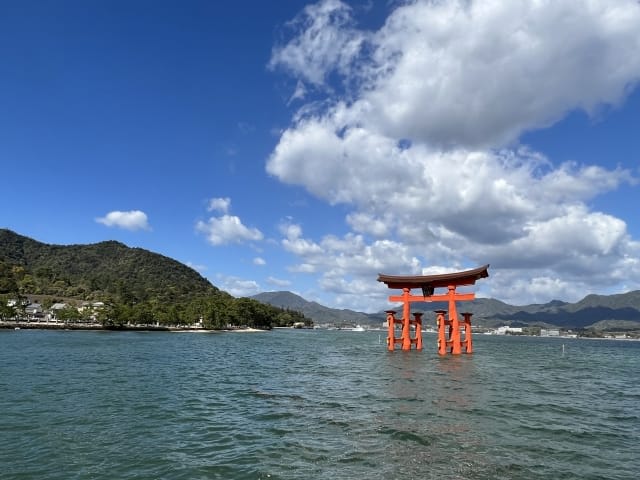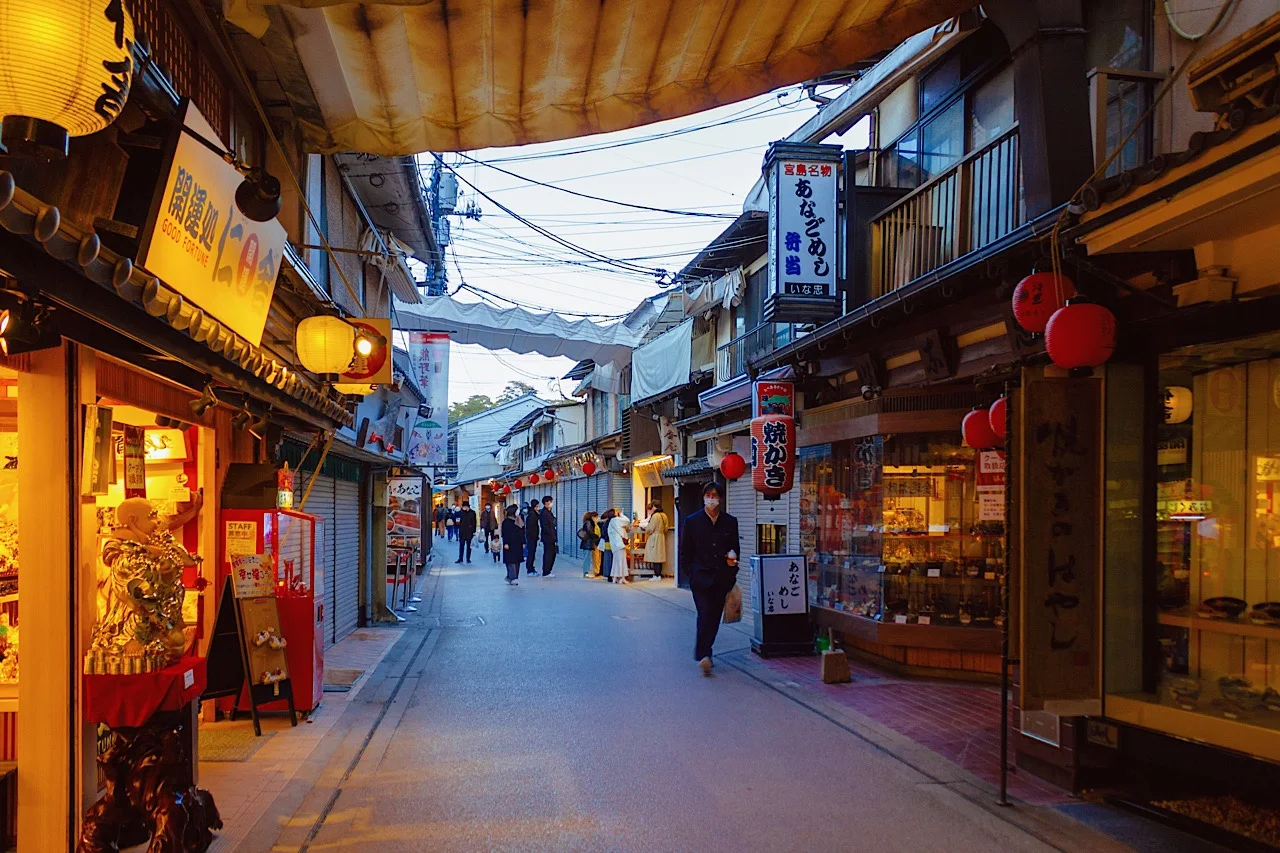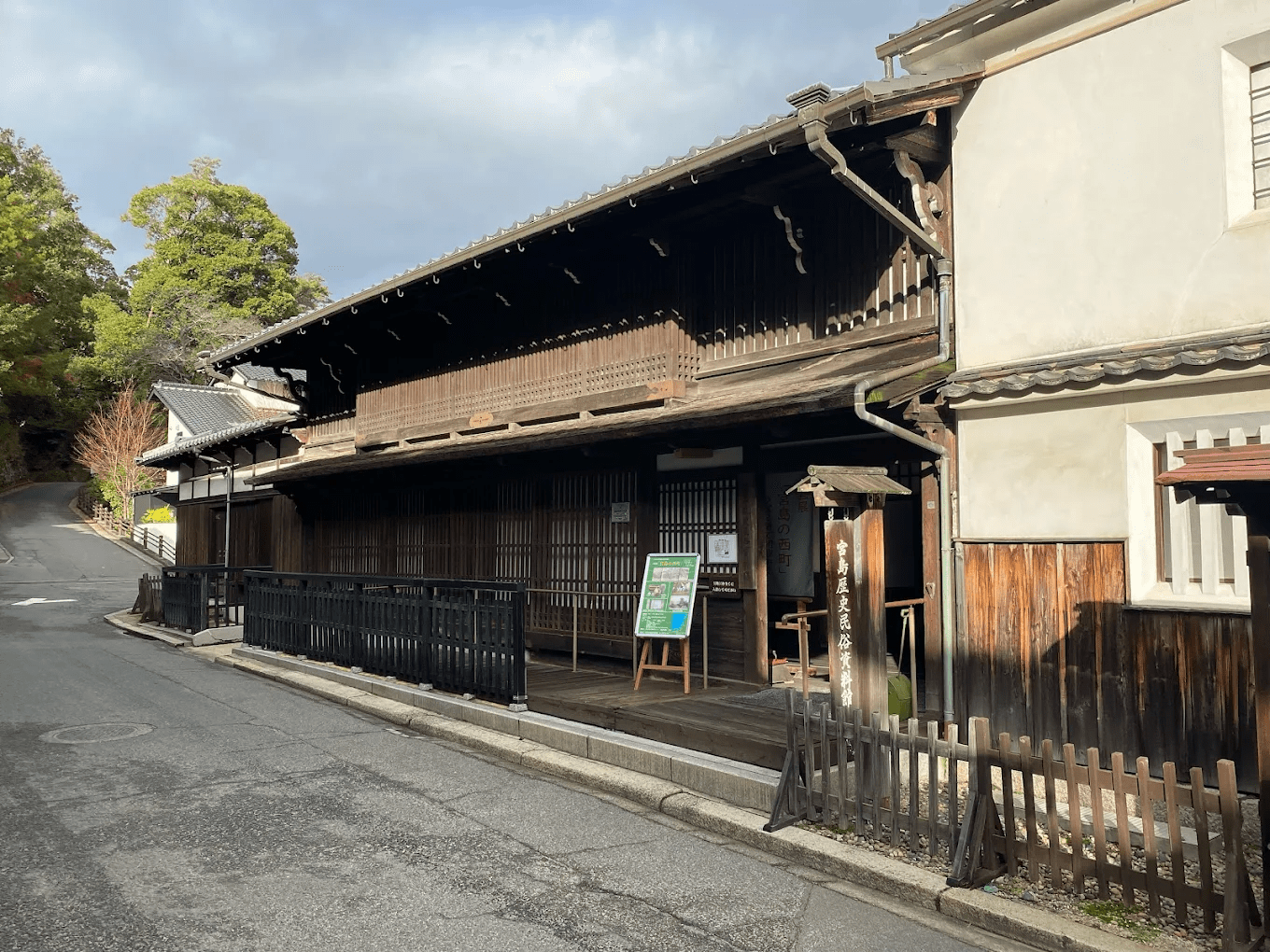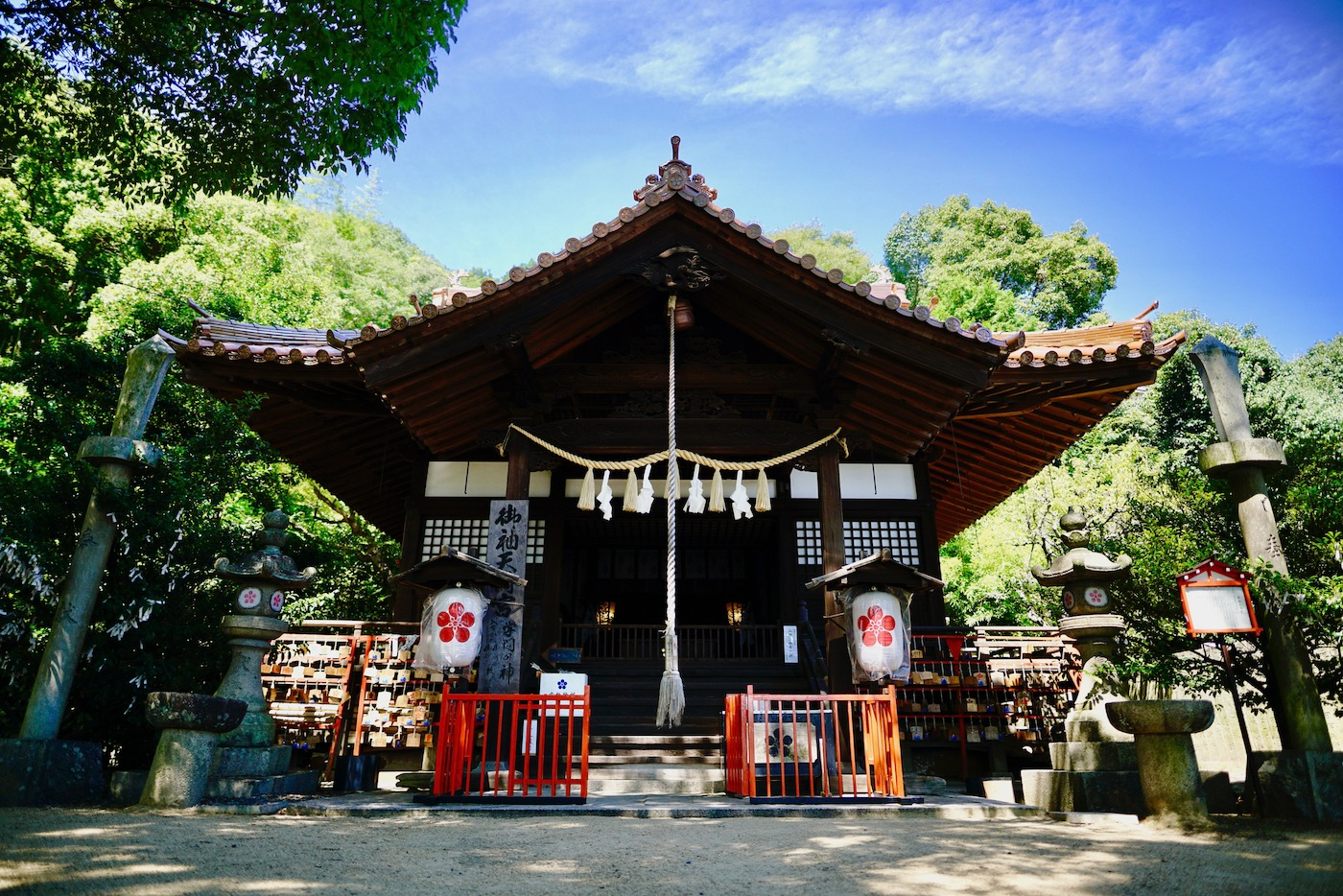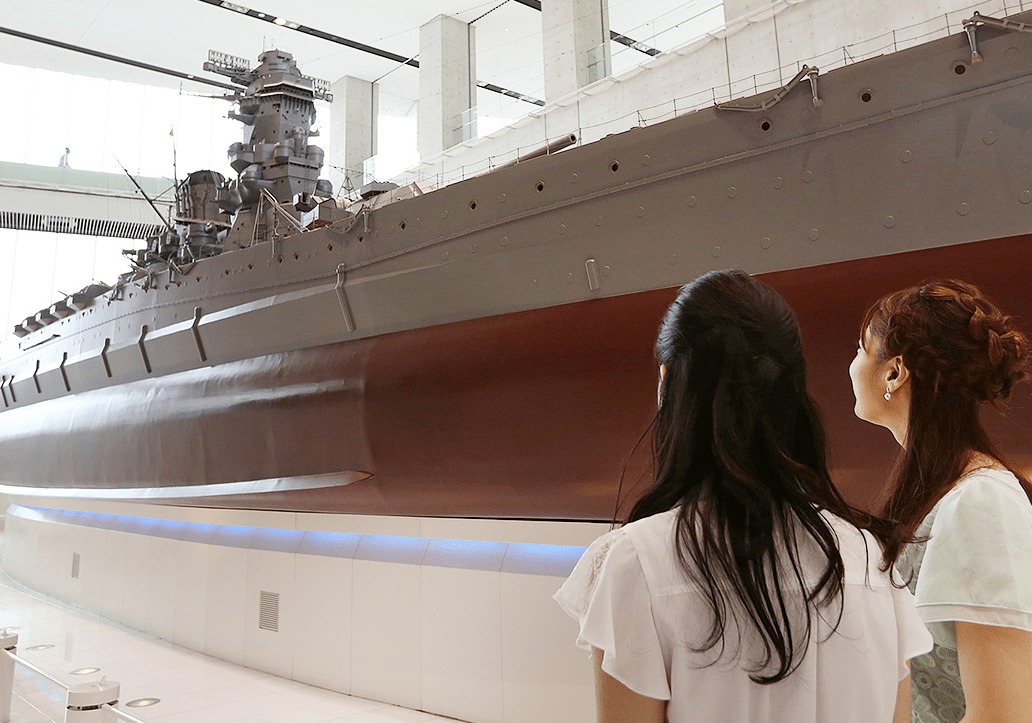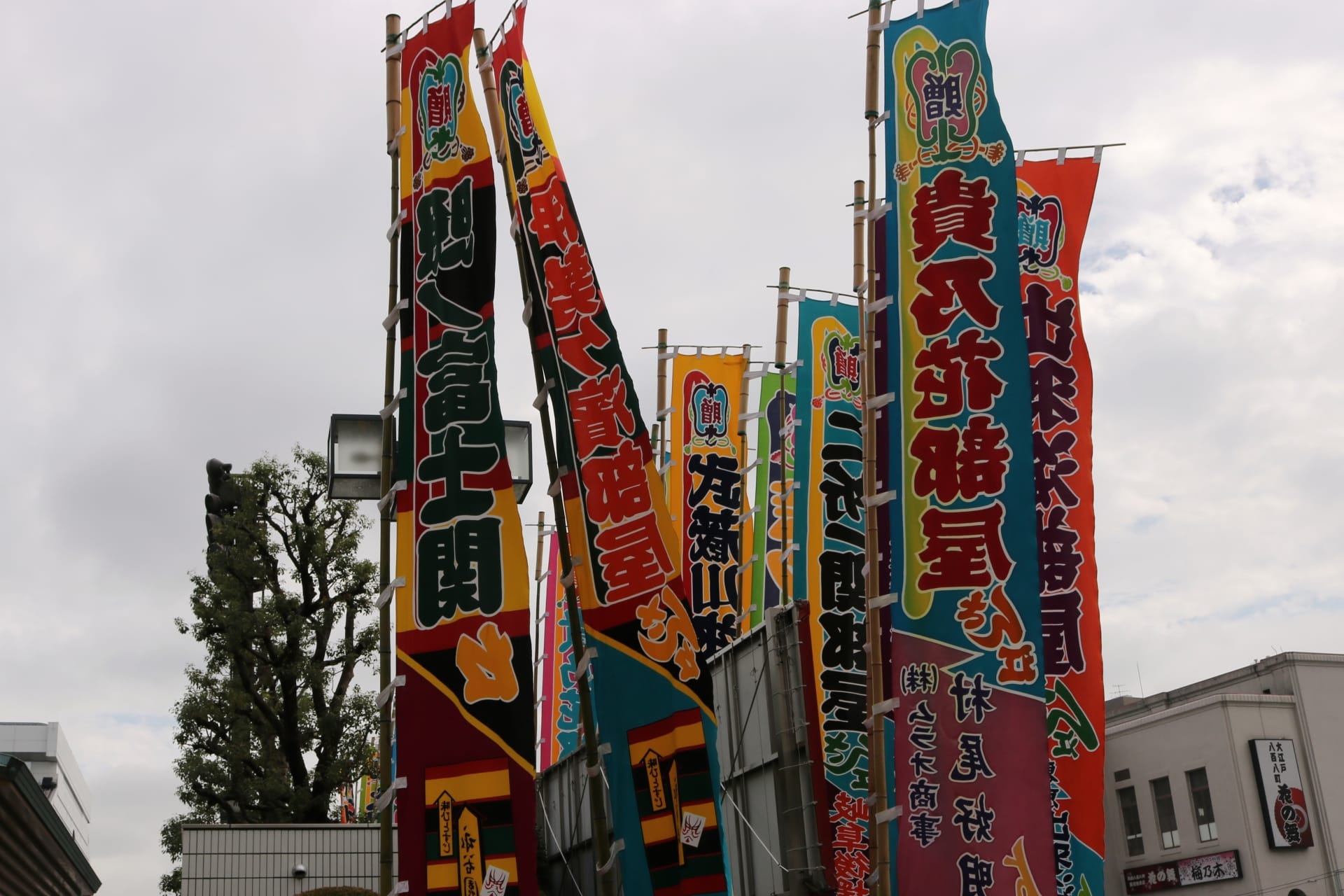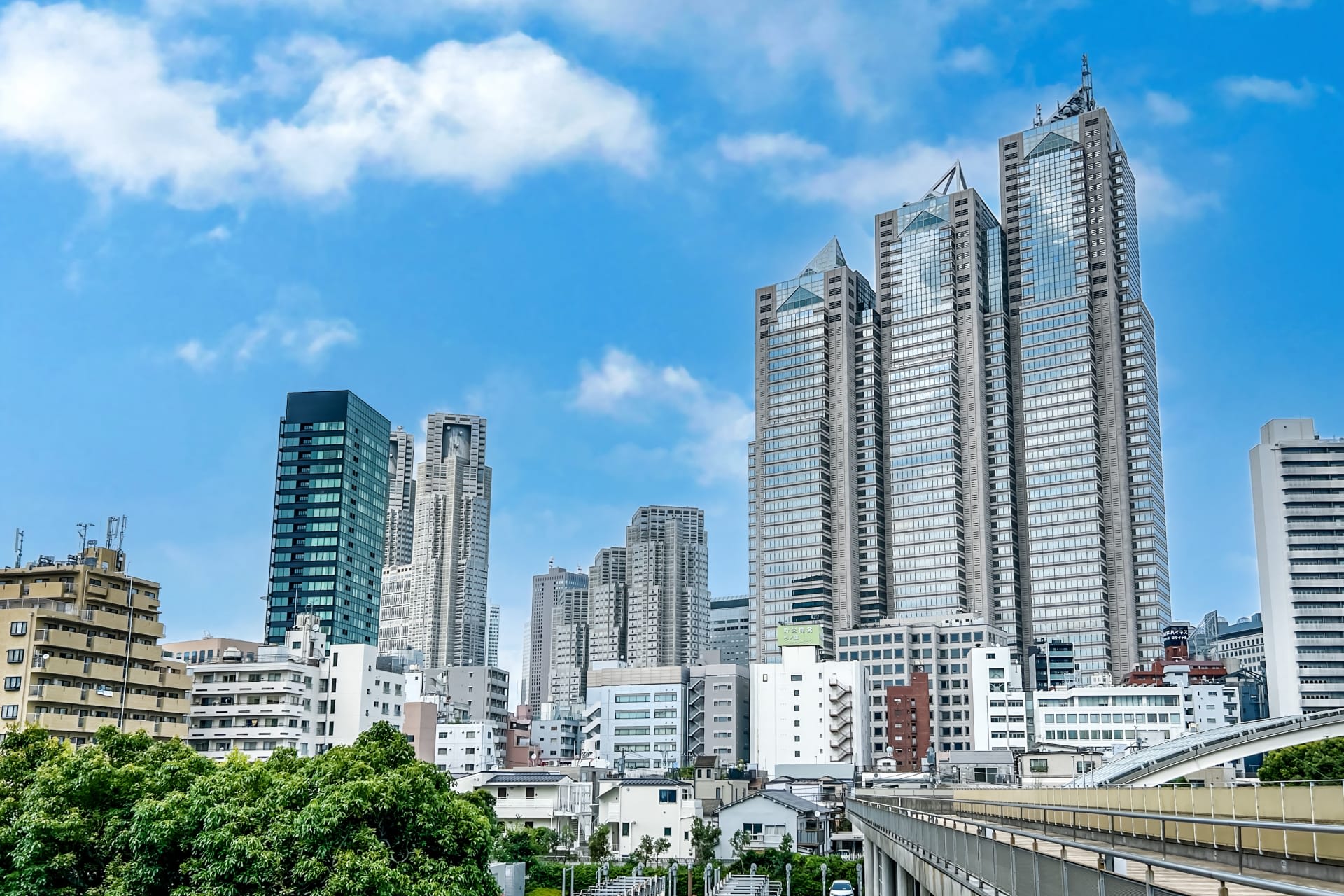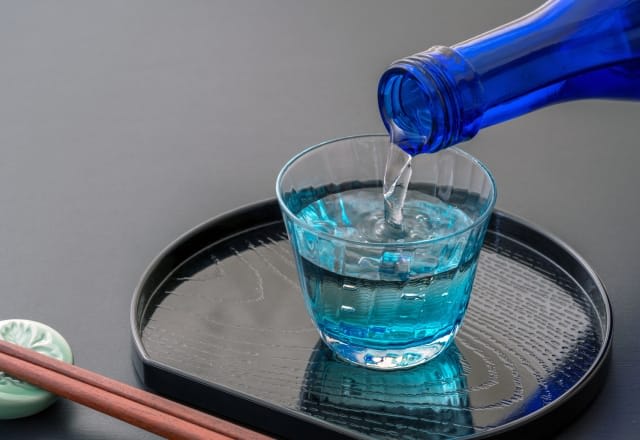The Complete Hiroshima Guide 2025: Best Things to Do, Peace Memorial Park, Miyajima and Must-visit Spots
Hiroshima is the world's first city where an atomic bomb was dropped in 1945, and it has many peace-related tourist attractions, including the Peace Memorial Park. Additionally, Hiroshima is a city where tradition lives on, with numerous historical landmarks such as the reconstructed Hiroshima Castle after the war and the UNESCO World Heritage-listed Itsukushima Shrine.
Furthermore, Hiroshima is famous as a gourmet city with an abundance of delicious food and drinks, including okonomiyaki (savory pancakes), oyster dishes, and sake.
This Hiroshima Guide provides essential information on must-visit spots, recommended cuisine, and transportation access to help you make the most of your limited time exploring Hiroshima, one of Japan's premier tourist destinations.
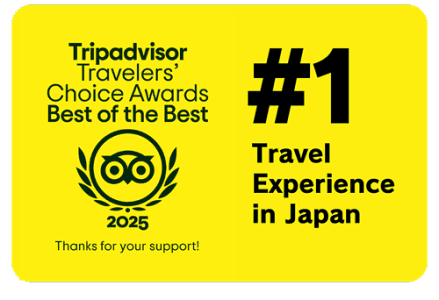
Table of Contents
-This is Hiroshima! A Travel Enthusiast's Carefully Selected Explanation of Hiroshima's Charms
-Must-See Tourist Destinations in Hiroshima to Visit, Explained by Area
-Exquisite Food You Must Enjoy When Visiting Hiroshima
-Hiroshima Has Different Charms Each Season! Hiroshima Guide to Seasonal Enjoyment
What is Hiroshima?
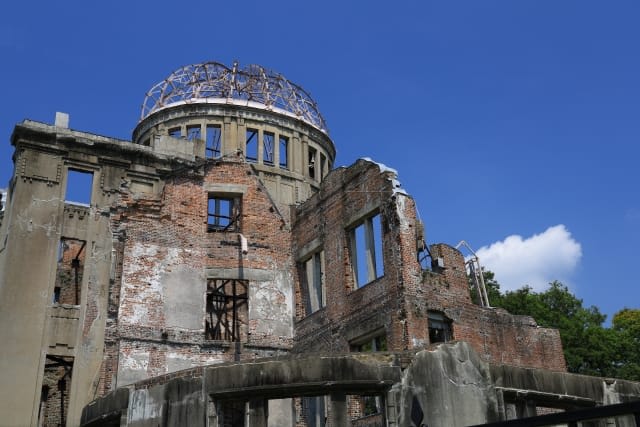
Hiroshima Prefecture is a representative prefecture of the Chugoku region, attracting attention from international tourists as an international city of peace and culture with a population of over 2.6 million. Having overcome the tragic history of the atomic bombing on August 6, 1945, Hiroshima is a symbolic city that continues to send messages of peace throughout Japan.
Hiroshima is famous not only for peace-related tourist sites such as the Atomic Bomb Dome and Peace Memorial Park, but also as an area blessed with beautiful seas, including the Itsukushima Shrine known for its mystical scenery of torii gates floating in the sea, and the "Shimanami Kaido," a sea route connecting small islands.
Additionally, Hiroshima is popular as a gourmet city where you can enjoy exquisite cuisine, including dishes using fresh seafood such as oyster dishes and White Rice Topped with Sea Eel, as well as okonomiyaki and noodle dishes.
Hiroshima's Location and Access
Hiroshima is located in western Japan, midway between Osaka and Fukuoka. It's easily accessible via Shinkansen without transfers from Tokyo, Japan's capital, and Osaka, the second-largest city. This convenient location from major Japanese cities is another reason for its popularity.
Below, this Hiroshima Guide provides detailed explanations of access methods to Hiroshima using three transportation methods: airplane, Shinkansen, and bus (car).
Access by Airplane
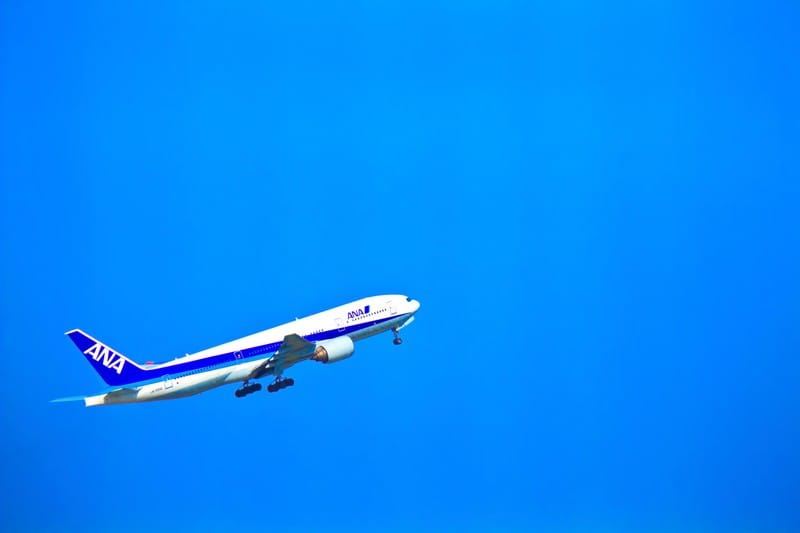
Hiroshima Airport is located in Mihara City, approximately 50km from the city center, and functions as a gateway to Hiroshima from domestic and international destinations.
From Haneda Airport (Tokyo), it's approximately 1 hour and 20 minutes by flight, with regular fares ranging from approximately 40,000 to 50,000 yen. However, depending on the boarding season and early booking discounts, it can be used for around 12,000 yen. Airplanes are the fastest means of travel from Tokyo to Hiroshima and are recommended for those who want to travel efficiently.
Additionally, from Hiroshima Airport to Hiroshima Station in Hiroshima City, you can travel affordably by limousine bus for approximately 50 minutes, with a one-way fare of 1,500 yen. Also, it's approximately 1 hour by jumbo taxi to Miyajima, where Itsukushima Shrine is located, making it convenient for sightseeing throughout various areas of Hiroshima.
Access by Shinkansen
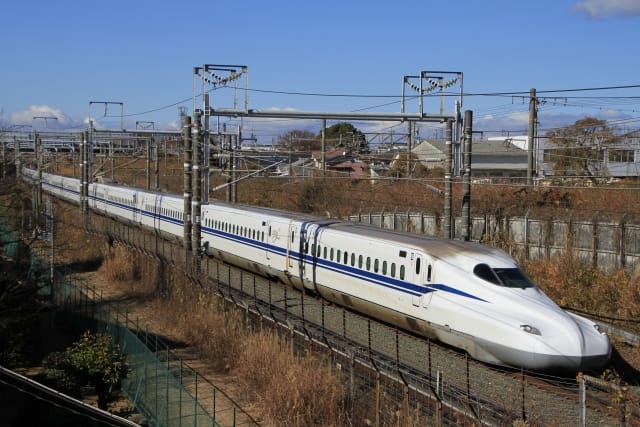
JR Hiroshima Station serves as a key hub for rail access from Tokyo and Osaka as a major station on the Sanyo Shinkansen line. When using the fastest Sanyo Shinkansen "Nozomi" to Hiroshima Station, the travel time and fares from Tokyo Station and Shin-Osaka Station are as follows:
From Tokyo Station:
Travel time: Approximately 4 hours
Fare: Non-reserved seat 18,380 yen, Reserved seat 19,560 yen
From Shin-Osaka Station:
Travel time: Approximately 1 hour 20 minutes
Fare: Non-reserved seat 9,890 yen, Reserved seat 10,750 yen
Japan's Shinkansen is excellent in terms of punctuality and comfort, allowing you to enjoy the scenery from the train window while traveling from Tokyo or Osaka to Hiroshima. From Hiroshima Station, you can conveniently access major tourist spots: approximately 15 minutes to the Atomic Bomb Dome by streetcar, and approximately 45 minutes to Miyajima by train and ferry.
Access by Bus and Car
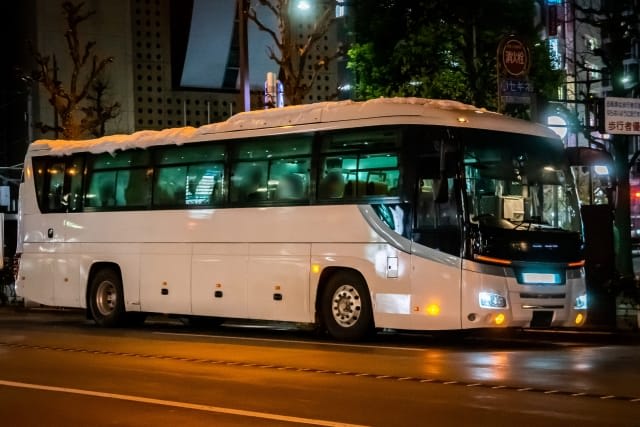
Highway buses are the most economical access method when traveling to Hiroshima.
Especially from Osaka to Hiroshima, you can travel very affordably with a travel time of approximately 5 hours 30 minutes to 7 hours 30 minutes and fares ranging from 2,500 to 6,000 yen. If you use night buses, you can efficiently utilize travel time and save on accommodation costs.
By car, it's approximately 330km (about 4 hours) from Osaka to Hiroshima using the Sanyo Expressway. From the Sanyo Expressway "Hiroshima IC," you can access the Atomic Bomb Dome in approximately 15 minutes.
Using a rental car or other automobile allows you to enjoy rest stops and sightseeing at service areas along the way, so it's also recommended for those who want to create a flexible itinerary.
This is Hiroshima! A Travel Enthusiast's Carefully Selected Explanation of Hiroshima's Charms
The City Center Has Numerous "Peace"-Related Tourist Sites
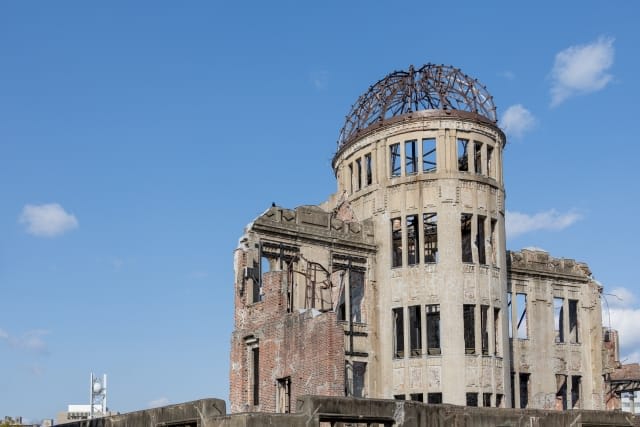
The center of Hiroshima City is a precious tourist destination where you can learn about the importance of peace as the world's only atomic-bombed nation. Peace-related tourist sites such as Peace Memorial Park, the Atomic Bomb Dome, and the Hiroshima Peace Memorial Museum are concentrated within walking distance, making it easy to efficiently enjoy major tourist spots.
Not only historical tourist attractions such as the Atomic Bomb Dome and the Hiroshima Peace Memorial Museum, but you can also walk to the new landmark Hiroshima Orizuru Tower, which offers a panoramic view of Hiroshima City including Peace Memorial Park.
The Peace Memorial Park area has good access, approximately 20 minutes by streetcar from Hiroshima Station. The main spots in Peace Memorial Park, including the Hiroshima Peace Memorial Museum, can be toured in about 2 to 3 hours, allowing you to deepen your understanding of world peace.
Many Historical Tourist Sites Including Shrines, Temples, and Castle Fortifications
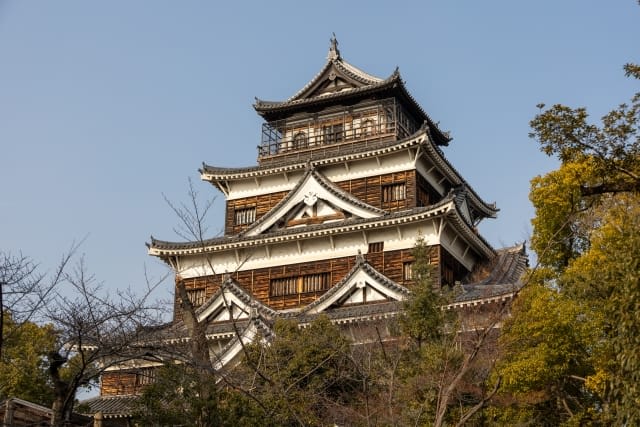
Hiroshima has an abundance of historical tourist sites where you can experience Japanese samurai culture and religious culture, including Hiroshima Castle built in 1589 and the UNESCO World Heritage-listed Itsukushima Shrine.
At Hiroshima Castle, the city's symbol, you can observe the city views from the castle tower and traditional castle architecture. At Itsukushima Shrine, you can gaze at the mystical scenery created by the torii gate built over the sea, and in the Onomichi area, you can enjoy the unique landscape of temples lined up along the hillside slopes.
Hiroshima Castle is within walking distance from Peace Memorial Park, and I recommend visiting it together with popular peace-related tourist spots. In the Itsukushima Shrine and Onomichi areas, you can enjoy the beautiful scenery created by the calm Seto Inland Sea and traditional shrines and temples.
Also Famous for Having Many Exquisite Dishes Such as Okonomiyaki and Momiji Manju
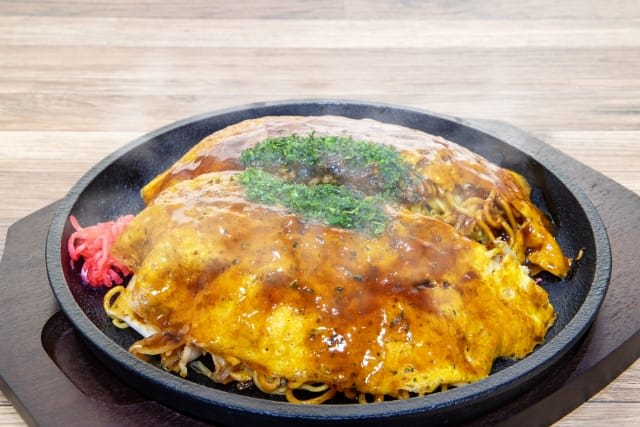
Hiroshima is also famous for offering a unique food culture within Japan, including Hiroshima-style okonomiyaki and fresh oysters caught in the Seto Inland Sea.
Hiroshima-style okonomiyaki in particular features noodles as an ingredient and is popular as a specialty dish that cannot be tasted in other regions. Throughout Hiroshima Prefecture, there are various okonomiyaki restaurants, mainly in Hiroshima City around Peace Memorial Park, and comparing different restaurants is also recommended.
Hiroshima also has local gourmet foods with different characteristics in each area, such as dishes using fresh Miyajima oysters and Momiji Manju, a famous Miyajima sweet. In the Onomichi area, try the local ramen, and in Kure, a naval port city, enjoy the navy's specialty curry and other unique local gourmet foods.
Main Tourist Areas in Hiroshima (w/map)
Hiroshima City (Naka Ward)
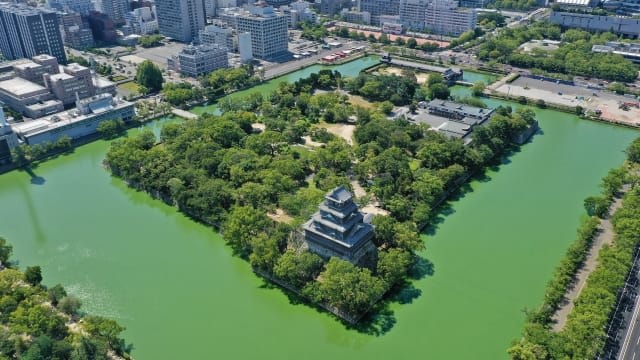
Naka Ward, the heart of Hiroshima City, serves as the political, economic, and cultural center of Hiroshima Prefecture, where both the prefectural and city government offices are located.
Hiroshima City (Naka Ward) is home to major tourist attractions such as the Atomic Bomb Dome, Peace Memorial Park, and Hiroshima Castle, making it the perfect base for exploring Hiroshima. The city center features numerous hotels and large commercial facilities, making it a convenient area for accommodations and shopping.
This central district of Hiroshima offers an abundance of restaurants where you can enjoy Hiroshima specialties such as okonomiyaki, ramen, and seafood dishes. This Hiroshima Guide recommends this area for those who want to efficiently enjoy sightseeing, gourmet food, and shopping.
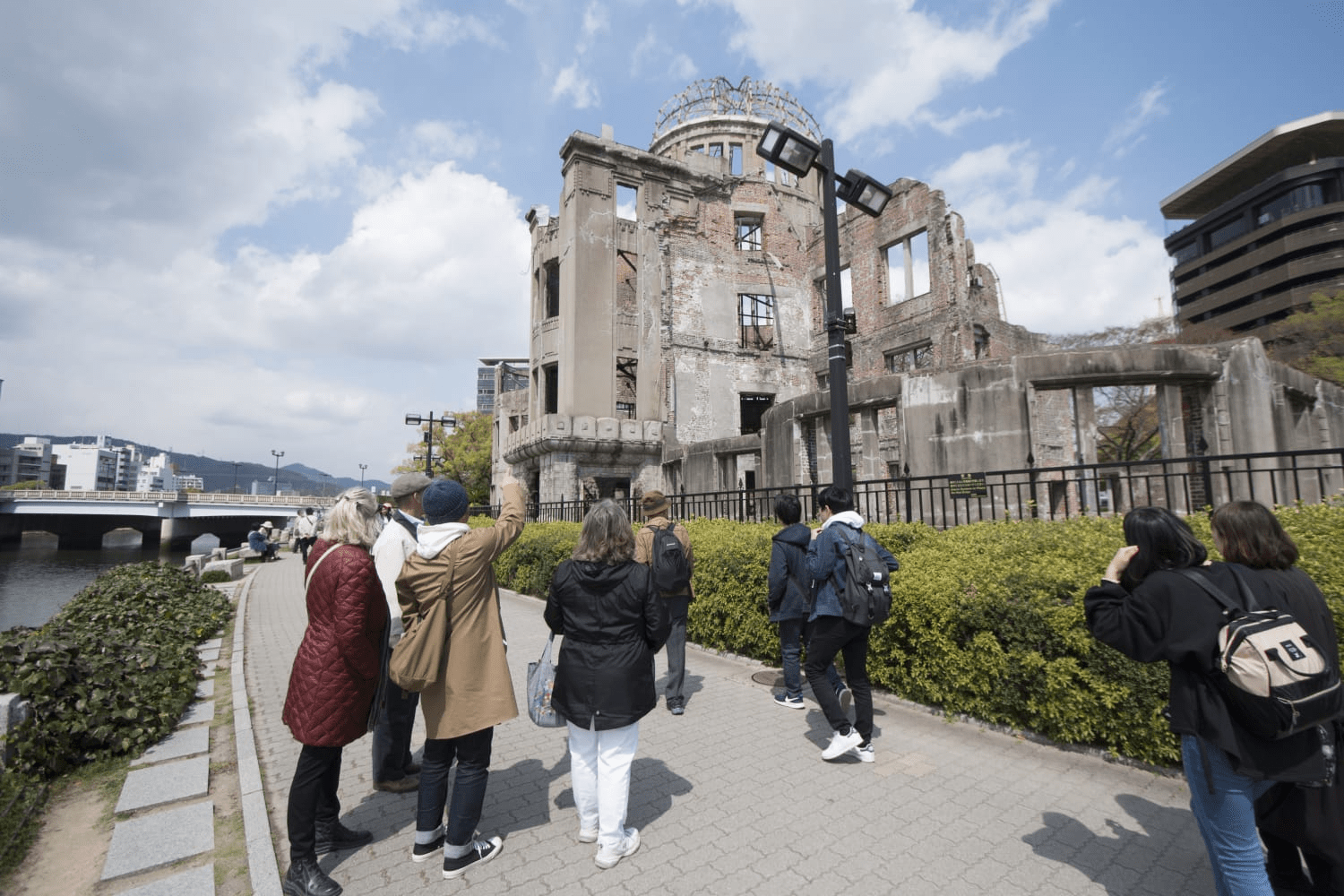
The Hiroshima Peace (Heiwa) Walking Tour at World Heritage Sites is a guided tour that takes you through peace-related tourist sites including the Atomic Bomb Dome, Peace Memorial Park, and Hiroshima Orizuru Tower.
What I personally recommend about this tour is that you can visit atomic bomb-related spots while listening to explanations from local guides. In addition to major attractions, guides introduce lesser-known traces of atomic bomb damage scattered throughout the city, allowing you to gain a deeper understanding of Hiroshima's history.
At Hiroshima Orizuru Tower, you can fold origami cranes, a symbol of peace, and experience Japanese tradition while embedding your wishes for peace. Please note that the Peace Memorial Museum may display photographs that could be shocking for young children. If you're concerned, it's reassuring to consult with your guide in advance.
<Information>
Meeting point: mont-bell store near Nishi Kamiyacho Station
Tour area: Central Hiroshima City
Start times: 9:00 / 9:30 / 10:30
Miyajima Area
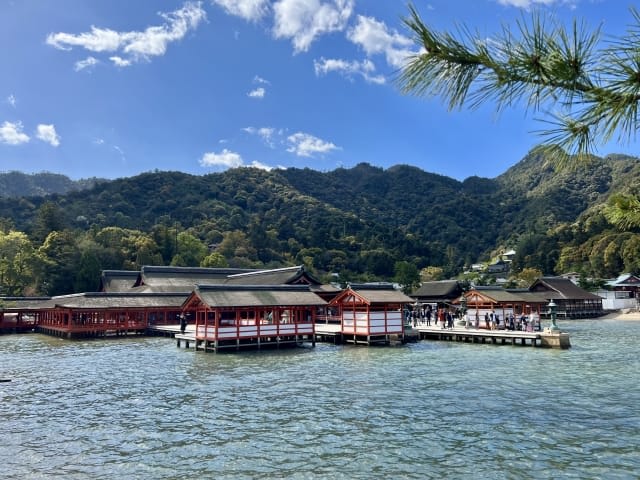
The Miyajima Area centers around Miyajima (Itsukushima), an island floating in Hiroshima Bay. It's famous for the floating torii gate of Itsukushima Shrine, which is registered as a UNESCO World Heritage Site, and the entire island is enveloped in a sacred atmosphere as a power spot.
The Miyajima Area offers abundant local gourmet food, including specialties using fresh seafood such as oyster dishes and White Rice Topped with Sea Eel, as well as Momiji Manju, a famous Hiroshima confection known throughout Japan.
Miyajima is located approximately 45 minutes from Hiroshima Station by train and ferry. This Hiroshima Guide also recommends it for those who want to casually enjoy a naturally rich atmosphere different from central Hiroshima.
Onomichi Area
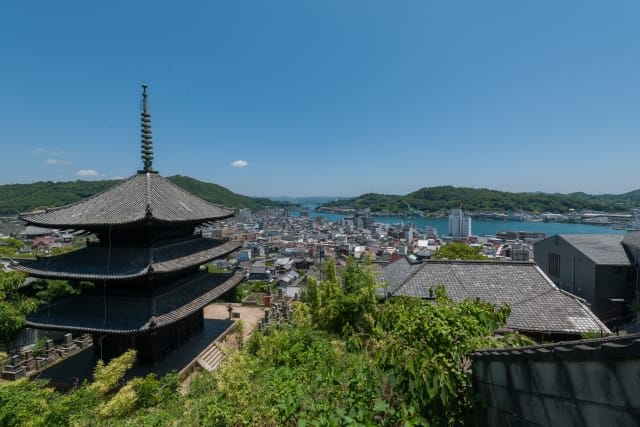
The Onomichi Area is a port town facing the Seto Inland Sea, characterized by its unique landscape with shrines and temples densely packed on mountain slopes. You can enjoy strolling through the town while visiting historic shrines and temples lined up along the slopes of old residential areas.
Additionally, the Onomichi Area is the starting point of the "Shimanami Kaido," a series of bridges connecting islands floating in the Seto Inland Sea, and is a cycling pilgrimage site visited by cyclists from both Japan and abroad. In the Onomichi Area, you can also enjoy delicious gourmet food such as "Onomichi Ramen," a local ramen made with broth from small fish from the Seto Inland Sea.
Onomichi City is approximately 40 minutes from Hiroshima City by Shinkansen, and is recommended for those who want to experience nature and traditions different from urban areas.
Kure City
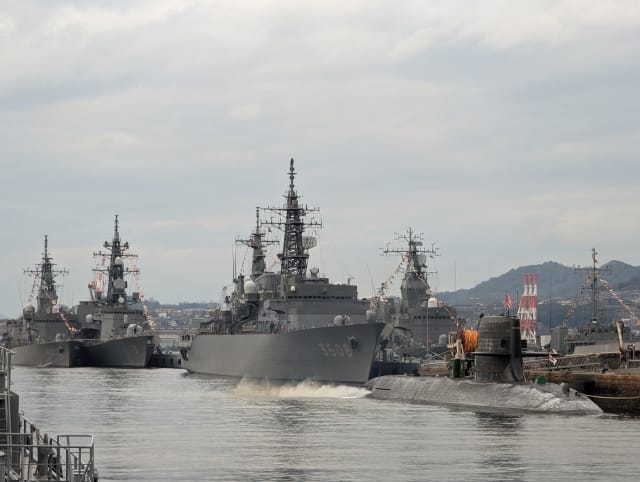
Kure City is known as a "naval port town" where a naval base was once established and where the world's largest battleship "Yamato" was constructed. Kure City still has many facilities where you can learn about the history of the Japanese Navy, including the Yamato Museum, which displays a 1/10 scale replica of the battleship "Yamato."
Additionally, what I personally love is that you can taste unique gourmet food specific to the "naval port town" of Kure City, such as "Kaiji Curry," which recreates the flavors actually eaten in the Maritime Self-Defense Force.
Kure City has good access, being about 30 minutes from Hiroshima City by local train, and is recommended for those who want to visit an area with a different atmosphere alongside their Hiroshima sightseeing.
Must-See Tourist Destinations in Hiroshima to Visit, Explained by Area
Hiroshima has diverse attractions scattered across each area, from world-famous peace-related tourist sites to regions where historic shrines and temples stand side by side. From here, this Hiroshima Guide will introduce recommended spots in Hiroshima that you should definitely visit, organized by area, so please use this as a reference.
Hiroshima City
Atomic Bomb Dome
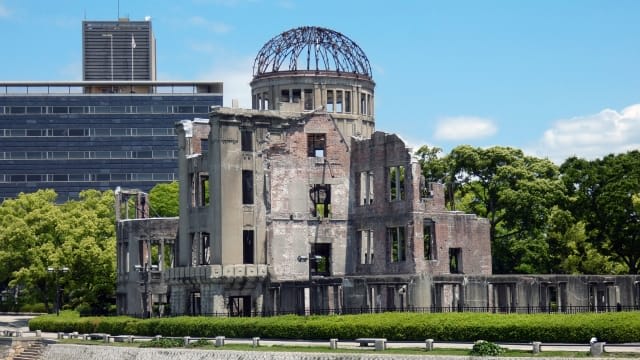
The Atomic Bomb Dome is a building that was bombed during the atomic bomb drop on August 6, 1945, and is currently registered as a UNESCO World Heritage Site.
The original building of the Atomic Bomb Dome was the Hiroshima Prefectural Industrial Promotion Hall, a brick structure built in 1915. Despite being at an extremely close distance of approximately 160 meters from the hypocenter, part of it survived, making it preserved as a valuable ruin that tells the story of the atomic bomb's power.
The Atomic Bomb Dome remains almost exactly as it was at the time of the bombing. The painful appearance with the dome-shaped disc's iron framework and stone foundation exposed left me so deeply shocked that I was at a loss for words, and I keenly felt the horror of the atomic bomb.
Why not visit the Atomic Bomb Dome, which symbolizes the world's first atomic bombed city, as an opportunity to think about the preciousness of peace?
<Information>
-Address: 1-10 Otemachi, Naka-ku, Hiroshima City, Hiroshima Prefecture
-Business hours: 24 hours
-Closed: None
-Phone number: 082-504-2900
-Official website: https://www.city.hiroshima.lg.jp/atomicbomb-peace/1036664/1021115/1015065.html
Peace Memorial Park
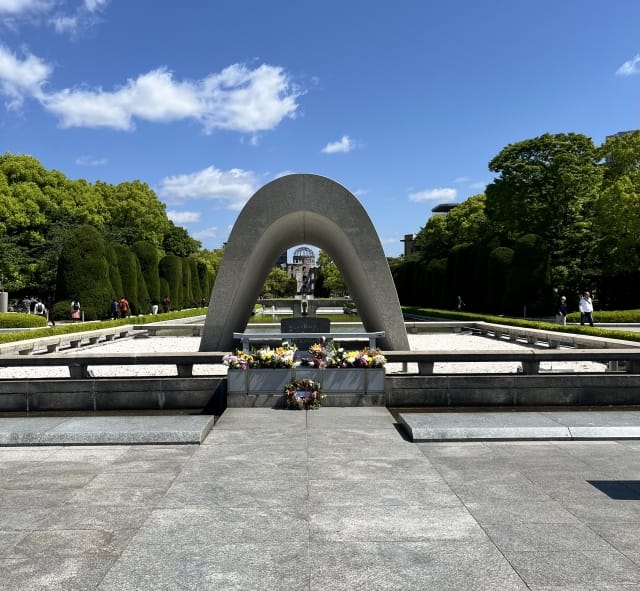
Peace Memorial Park is an urban park boasting an area of approximately 120,000 square meters. Within the park, facilities and monuments are arranged to commemorate atomic bomb victims and pray for peace, including the Atomic Bomb Dome, Hiroshima Peace Memorial Museum, Cenotaph for the Atomic Bomb Victims, and The Children's Peace Monument.
In particular, the Cenotaph for the Atomic Bomb Victims contains a registry of the names of those who died, and it has become a place where many people visiting from both Japan and abroad offer flowers and silent prayers.
Peace Memorial Park is open 24 hours, and when I travel to Hiroshima, my routine is to visit in the early morning when I can offer prayers for peace in a quiet environment. Why not quietly reflect on peace in the park where nature and peace-related facilities are in harmony?
<Information>
-Address: 1 Nakajima-cho and 1-10 Otemachi, Naka-ku, Hiroshima City, Hiroshima Prefecture
-Business hours: 24 hours
-Closed: None
-Phone number: 082-504-2390
-Official website: https://www.city.hiroshima.lg.jp/living/park-green/1005983/1026353/1003127.html
Peace Memorial Museum
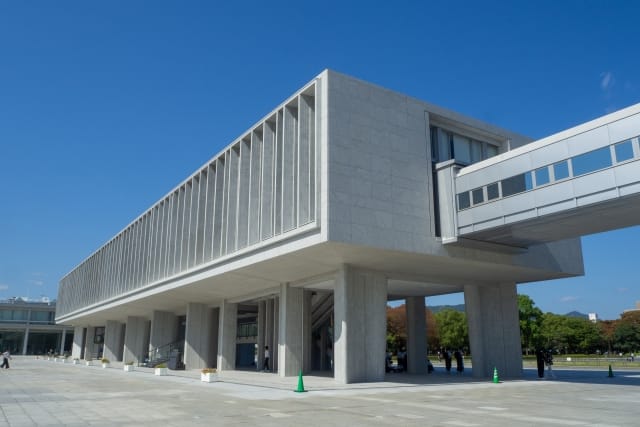
The Peace Memorial Museum is a facility that conveys the reality of the atomic bombing to the world and serves as the centerpiece of Hiroshima's peace-related tourist destinations.
Opened in 1955, this museum explains through photographs and videos the history of Hiroshima, the city before and after the bombing, and the dangers of nuclear weapons, conveying the tragedy of war and the importance of peace.
What characterizes this museum is its many exhibits where you can feel the horror of the atomic bomb firsthand, including belongings of atomic bomb victims and testimonies. Among these, what left a particularly strong impression on me was a glass bottle deformed by the atomic bomb's heat blast. Thinking of the victims who were exposed to heat so intense that it melted glass, I truly realized the tragedy of the atomic bomb.
The Peace Memorial Museum offers audio guides in 15 languages, so foreign visitors who don't understand Japanese can learn about peace with confidence.
<Information>
-Address: 1-2 Nakajima-cho, Naka-ku, Hiroshima City, Hiroshima Prefecture
-Operating Hours: [March-July, September-November] 7:30-19:00 [August] 7:30-20:00 Until 21:00 on August 5 and 6 [December-February] 7:30-18:00
-Closed: December 30, December 31, mid-February
-Phone: 082-241-4004
-Official Website: https://hpmmuseum.jp/
Hiroshima Orizuru Tower
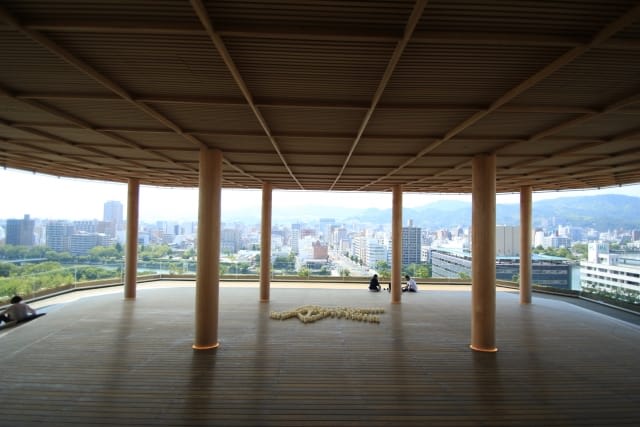
Hiroshima Orizuru Tower is a new landmark of Hiroshima that opened in 2016. From this 14-story above-ground facility, you can enjoy a panoramic view of both the Peace Memorial Park, which conveys the history of the atomic bomb, and the modern Hiroshima cityscape lined with high-rise buildings.
One of my favorite points about this facility is that you can participate in an experiential art project by dropping origami cranes you've folded yourself into the "Orizuru Wall." The paper crane, one of Japan's traditional "origami" crafts, is also a symbol of peace, and you can express your wishes for peace in tangible form through your folded crane.
The first floor of Hiroshima Orizuru Tower is a product hall featuring Hiroshima specialties. It's also recommended for selecting souvenirs to take back to your home country, such as traditional crafts and famous confections.
<Information>
-Address: 1-2-1 Otemachi, Naka-ku, Hiroshima City, Hiroshima Prefecture
-Operating Hours: 10:00-18:00
-Closed: Irregular holidays
-Phone: 082-569-6803
-Official Website: https://www.orizurutower.jp/
Hiroshima Castle

Hiroshima Castle was built in 1589 by the famous general Mohri Terumoto, who was from Hiroshima. Located about 1 km from the hypocenter, the castle buildings collapsed due to the atomic bomb, and the current castle tower was rebuilt in 1958.
Today's Hiroshima Castle functions as a museum where you can learn about Hiroshima's samurai culture and history. Inside the five-story castle tower, you can view models that teach about the structure of Hiroshima Castle and exhibits of armor and swords worn by samurai.
Additionally, the top fifth floor is popular as an observation room overlooking the city of Hiroshima. From the observation deck, you can enjoy panoramic views of modern buildings, the Atomic Bomb Dome, and on clear days, the mountains of Miyajima. Since Hiroshima Castle is about a 20-minute walk from Peace Memorial Park, please be sure to visit both together.
<Information>
-Address: 21-1 Motomachi, Naka-ku, Hiroshima City, Hiroshima Prefecture
-Operating Hours:
[Castle Tower] 9:00-18:00 (until 17:00 December-February)
[Ninomaru] 9:00-17:30 (until 16:30 October-March)
-Closed:December 2, December 29-31 Entry to castle tower ends March 22, 2026
-Phone: 082-221-7512
-Official Website: https://hiroshimacastle.jp/
Miyajima Area
Itsukushima Shrine
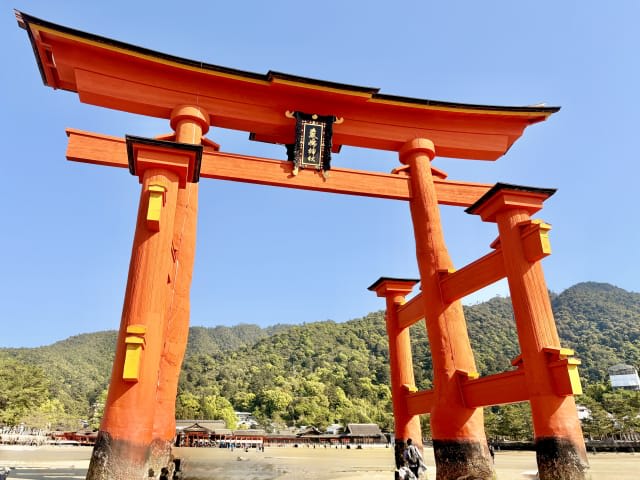
Itsukushima Shrine is known for its vermillion-lacquered great torii gate standing in the sea and is registered as a UNESCO World Cultural Heritage site. This shrine with a long history dating back to its founding in 593 was developed into its current magnificent complex of shrine buildings about 850 years ago by the warrior Taira no Kiyomori.
The main hall and worship hall built on the sea offer a mystical landscape that appears to float on the water during high tide. Additionally, one of my favorite points about this shrine is that you can walk to the great torii gate during low tide. Unlike viewing it from afar, approaching it reveals the gate's overwhelming size as it towers above you.
At this shrine, the vermillion shrine buildings and blue sea create an exquisite contrast. Particularly in the evening, you can enjoy a fantastic spectacular view as the shrine buildings and sea are illuminated by the sunset. Please be sure to capture this uniquely Japanese landscape where traditional architecture and nature merge.
<Information>
-Address: 1-1 Miyajima-cho, Hatsukaichi City, Hiroshima Prefecture
-Operating Hours: Around 6:30-18:00 (varies by season)
-Closed: Open year-round
-Phone: 0829-44-2020
-Official Website: https://www.itsukushimajinja.jp/
Check the Tide Schedule in Advance
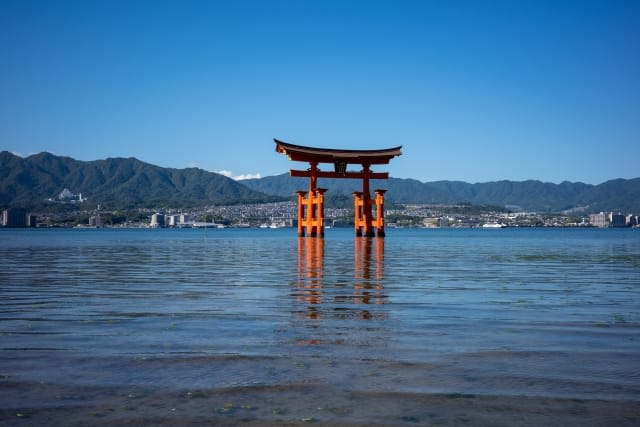
Since the great torii gate at Itsukushima Shrine offers different views depending on the tide level, be sure to check the tide schedule in advance when visiting. At high tide (tide level 250cm or above), you can see the fantastic sight of it floating on the sea, while at low tide (tide level 100cm or below), you can walk on the sandy beach right up to the base of the great torii gate.
High tide at Itsukushima Shrine occurs twice a day at roughly the same time in the morning and afternoon (example: 6:00 AM and 6:00 PM). Since high tide time shifts by approximately 30 minutes to 2 hours each day, it's recommended to check the official website in advance for the day's high tide time.
Miyajima Omotesandō Shopping Street
Source:Google Maps
Miyajima Omotesandō Shopping Street is a traditional shopping street located on the approach from Miyajima Pier to Itsukushima Shrine. This approximately 350-meter-long shopping street is filled with restaurants and souvenir shops where you can enjoy Miyajima specialties such as oyster dishes, White Rice Topped with Sea Eel, and Momiji Manju.
What I recommend about this shopping street is that it also has souvenir shops where you can purchase "Miyajima woodwork," traditional woodcraft items. Wooden kitchen items that showcase craftsmen's skilled techniques, such as Shakushi (rice servers) and plates with delicate carvings, make perfect souvenirs for your home country.
Since there are also Japanese confectionery shops in this shopping street where you can enjoy freshly baked Momiji Manju, it's also recommended for those who want to enjoy eating local Miyajima specialties while walking around.
<Information>
-Address: Miyajima-cho, Hatsukaichi City, Hiroshima Prefecture
-Operating Hours: Varies by store
-Closed: Varies by store
-Phone: 0829-51-1122
-Official Website: https://www.miyajima.or.jp/live/omotesando.html
Hokoku-jinja (Senjokaku Pavilion)
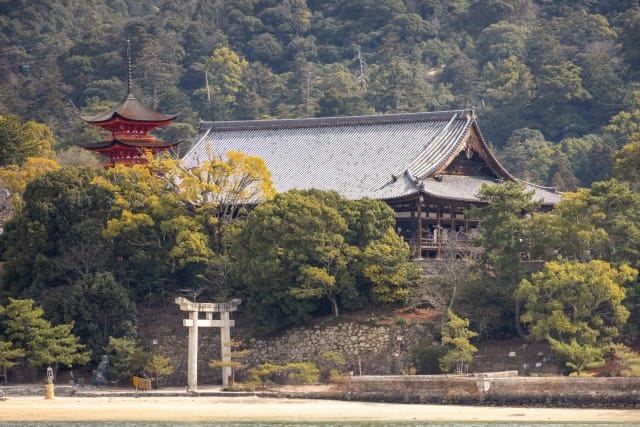
Hokoku-jinja is one of Itsukushima Shrine's Massha (small shrines deeply related to the Main Shrine). The great hall of this shrine is also called "Senjokaku Pavilion," and inside spreads a huge space large enough to lay 857 tatami mats.
Hokoku-jinja is a rare shrine that was started in 1587 under the orders of the famous general Toyotomi Hideyoshi, who once achieved the unification of Japan, but was left unfinished due to his death.
Because the building interior is unfinished, there are no ceiling boards or doors, and you can observe up close the unique structure with exposed beams and rafters. Also, the large wooden panel paintings hanging on the beams inside this shrine are a must-see. Please be sure to tour this traditional shrine architecture that is over 400 years old.
<Information>
-Address: 1-1 Miyajima-cho, Hatsukaichi City, Hiroshima Prefecture
-Operating Hours: 8:30-16:30
-Closed: None
-Phone: 0829-44-2020
-Official Website: https://www.itsukushimajinja.jp/jp/setumatusya.html
Daishoin
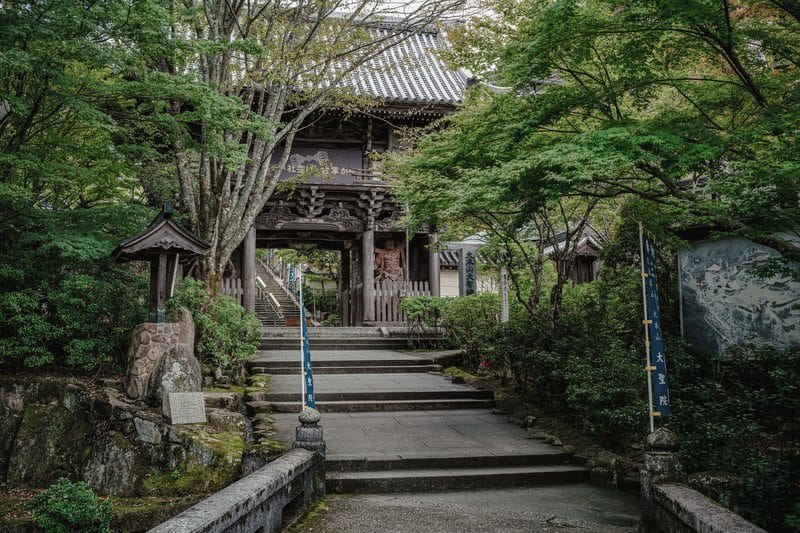
Daishoin is Miyajima's oldest temple, founded in 806 by Kukai (Kobo Daishi), the founder of the Shingon sect of Buddhism. Daishoin has long been responsible for the rituals and management of Itsukushima Shrine, playing a central role in Miyajima's religious culture.
Daishoin has many highlights, including the "Niomon Gate" at the main entrance and "Daishido," where Kukai is enshrined.
What I especially recommend is "Kannon Hall," where a golden bodhisattva statue is enshrined. In addition to the bodhisattva statue, you can also view sand mandalas created through exchanges with Tibetan Buddhism.
Since Daishoin has good access, about a 10-minute walk from Itsukushima Shrine, please be sure to visit both together and experience Japan's Buddhist culture.
<Information>
-Address: 210 Miyajima-cho, Hatsukaichi City, Hiroshima Prefecture
-Operating Hours: 8:00-17:00 (purchases of amulets, etc. 8:00-16:00)
-Closed: None
-Phone: 0829-44-0111
-Official Website: https://daisho-in.com/
Miyajima History and Folklore Museum
Source:Google Maps
The Miyajima History and Folklore Museum is a museum where you can learn about Miyajima's history and the island residents' living culture. In this charming building utilizing a private house built in the early 1800s, you can view islanders' old daily items, traditional crafts such as Miyajima woodwork, chronological tables related to Itsukushima Shrine, and video materials.
What I especially recommend is the area that introduces the island's traditional festivals through photographs and models. You can enjoy exhibits not seen elsewhere, such as models of boats used in Itsukushima Shrine's largest ritual "Kangen Festival," as well as baking molds for the Miyajima specialty "Momiji Manju."
This museum has thoughtful features that allow foreign tourists to enjoy themselves with confidence, such as English subtitles on video materials, so please feel free to visit.
<Information>
-Address: 57 Miyajima-cho, Hatsukaichi City, Hiroshima Prefecture
-Operating Hours: 9:00-17:00 (last admission 16:30)
-Closed: Mondays (next day if holiday), December 26-31
-Phone: 0829-44-2019
-Official Website: http://members.fch.ne.jp/miyajima-rekimin/
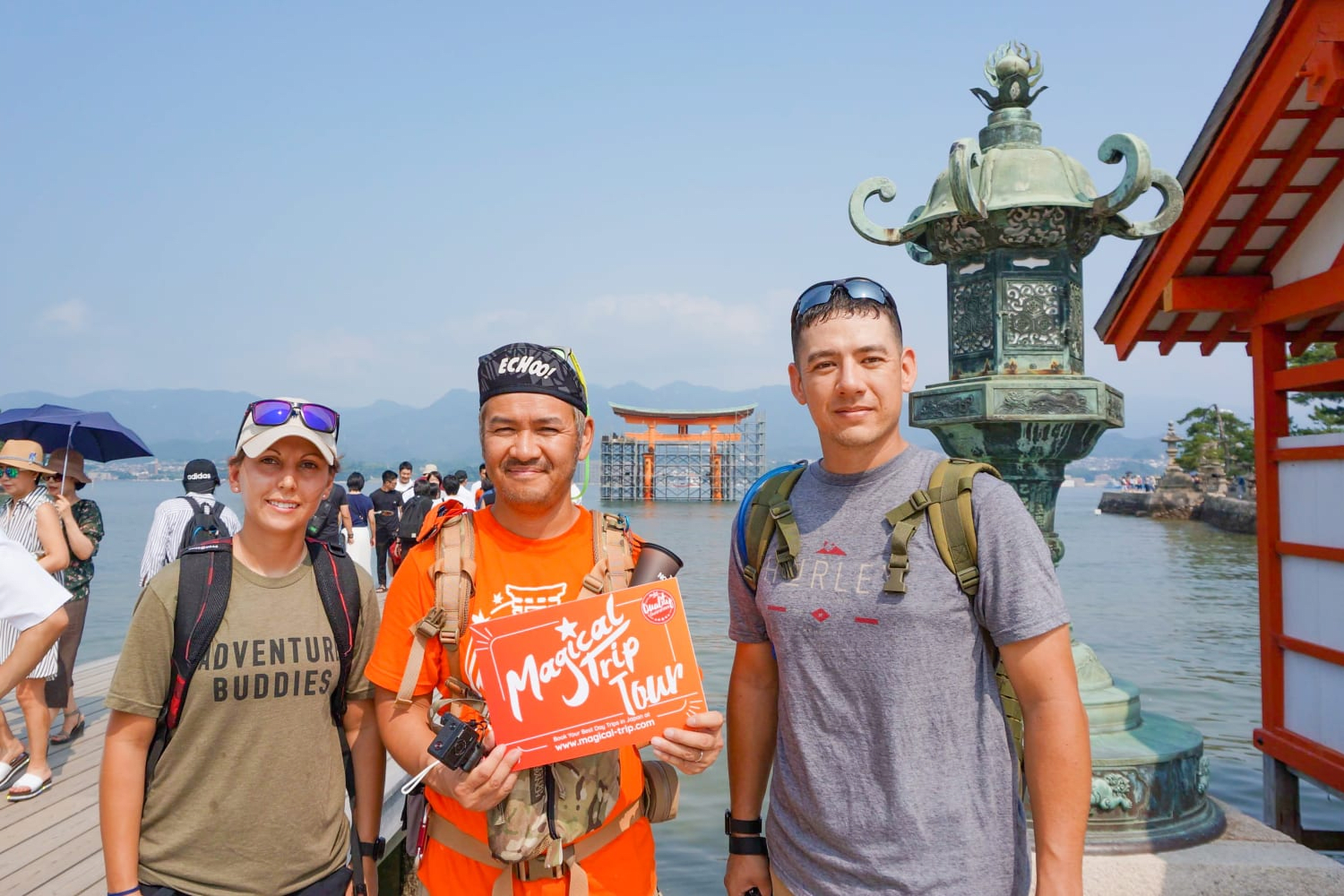
The Miyajima Half-day Trip Historical Walking Tour is a guided tour that takes you to representative Miyajima spots including Itsukushima Shrine, Daishoin, and Miyajima History and Folklore Museum.
My top recommendation for this tour is that you can explore Miyajima's historical landmarks while learning about the differences between Japanese Shinto and Buddhism from an English-speaking local guide. Additionally, since the meeting point is at the ferry terminal bound for Miyajima, even first-time foreign visitors can board the ferry with confidence.
This tour involves considerable time exploring outdoors, including Itsukushima Shrine and Momijidani Park, famous for its autumn foliage. Please dress appropriately for the seasonal climate, such as taking measures against heatstroke in summer and cold weather in winter.
<Information>
Meeting point: Coin Operated Locker at outside of JR Miyajimaguchi Station
Tour Area: Miyajima Area
Start Time: 9:30 / 10:00
Onomichi Area
Senkou Temple
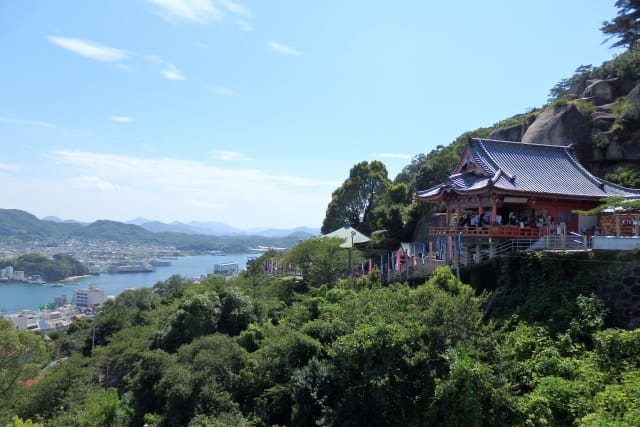
Senkou Temple is one of Onomichi's representative temples, founded in 806 and located at an elevation of 140 meters on the mid-slope of Mt. Taihozan. It's characterized by its vermillion-painted main hall that juts out from the mountain slope, and its popularity stems not only from its long history but also from its exceptional location offering panoramic views of Onomichi city and Onomichi port.
What particularly impressed me at Senkou Temple is that there are massive rocks of various shapes throughout the temple grounds. The harmony between traditional temple architecture and the unique rock formations created by nature allows you to enjoy a landscape quite different from temples in urban areas.
I recommend taking the ropeway from the base of Mt. Taihozan to Senkou Temple. During the approximately 3-minute ride, you can enjoy the Onomichi cityscape and Senkoji Temple along with the seasonal natural beauty.
<Information>
-Address: 15-1 Higashi-Tsuchidocho, Onomichi City, Hiroshima Prefecture
-Business Hours: 9:00-17:00
-Closed: None
-Phone: 0848-23-2310
-Official Website: https://www.senkouji.jp/
Shimanami Kaido
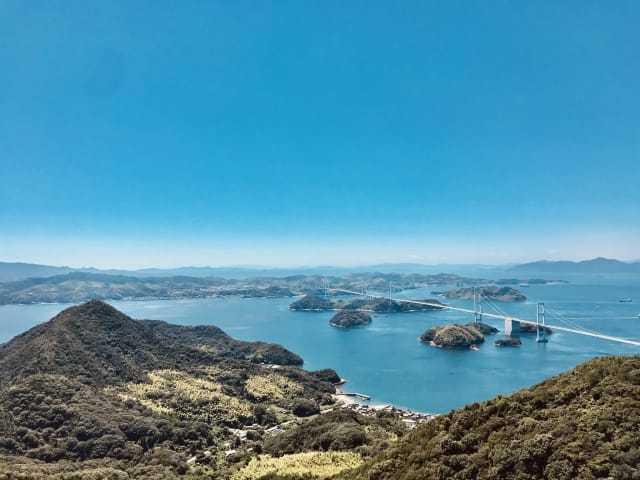
Shimanami Kaido is a scenic route spanning approximately 60 km connecting Onomichi City and Imabari City in Ehime Prefecture, linking islands floating in the Seto Inland Sea with seven bridges.
Shimanami Kaido is also famous as a pilgrimage site for cyclists. With dedicated roads for bicycles and pedestrians, you can safely enjoy cycling or walking while viewing the beautiful seascape.
Another reason I recommend Shimanami Kaido is that you can visit islands with unique characteristics, such as Mukaishima Island where you can enjoy panoramic views of the archipelago's beauty, and Ikuchijima Island, a famous production area for lemons. Each island has rental bicycle terminals, making it easy to experience scenic cycling.
<Information>
-Address: Onomichi City, Hiroshima Prefecture ~ Imabari City, Ehime Prefecture
-Business Hours: 24 hours
-Closed: None
-Phone: 078-291-1033
-Official Website: https://www.jb-honshi.co.jp/shimanami/
Misode Tenmangu Shrine
Source:Official website
Misode Tenmangu Shrine is a shrine dedicated to Sugawara no Michizane, known as the "God of Learning." The shrine's name originates from when Michizane, on his way to exile in Dazaifu, Fukuoka Prefecture, stopped by Onomichi and gave the sleeve (Misode) of his own garment to local residents as thanks for their kindness.
In addition to attracting many students during exam season, this shrine has recently gained popularity as a pilgrimage site for various popular anime. Looking down from the shrine building, you can enjoy spectacular views that feel like stepping into an anime world, with houses densely packed along the slopes.
Plum trees associated with Michizane are planted in the temple grounds, and you can enjoy the beautiful sight of blooming flowers around February to March. Please experience the traditional architecture and spectacular seasonal views unique to Onomichi, the city of slopes.
<Information>
-Address: 1-11-16 Nagae, Onomichi City, Hiroshima Prefecture
-Business Hours: 24 hours
-Closed: None
-Phone: 0848-37-1889
-Official Website: https://misodetenmangu.or.jp/
Kure City
Yamato Museum (Kure Maritime Museum)
Source:Official website
The Yamato Museum (Kure Maritime Museum) is a museum displaying panels and models related to shipbuilding and science technology, centered around the battleship Yamato. This museum is characterized by many exhibits where you can visually experience the actual size through real objects and models, such as the main gun barrel, main rudder, and submersible research vessel of the battleship.
Among these, what I particularly want you to see at this museum is the 1/10 scale model of the battleship Yamato. The elaborate construction of the battleship Yamato is reproduced down to the finest details, allowing you to appreciate the high level of shipbuilding technology of that era.
The Yamato Museum is closed until the end of March 2026 due to renovation work. However, even during closure, you can observe the renovation of the 1/10 scale model of the battleship Yamato outdoors at the main building, and at the satellite facility you can view panel and model exhibits, so please visit.
<Information>
-Address: 5-20 Takaracho, Kure City, Hiroshima Prefecture (currently temporarily closed)Some exhibits available at satellite facility (1-1-2 Nakadori, Kure City, Hiroshima Prefecture)
-Business Hours: Currently closed (Satellite: 9:00~18:00, 2nd floor 9:00~17:00)
-Closed: Tuesdays (closed the following day if a holiday)
-Phone: 0823-25-3017
-Official Website: https://yamato-museum.com/
Japan Maritime Self-Defense Force (JMSDF) Kure Museum
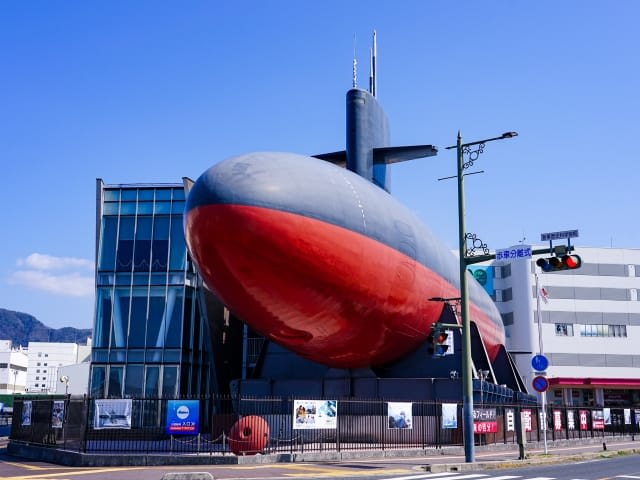
The Japan Maritime Self-Defense Force (JMSDF) Kure Museum is a museum that introduces the historical relationship between Kure City and the Maritime Self-Defense Force through exhibits related to submarines and minesweepers.
My top pick at this museum is the actual display of the submarine Akishio, which was actually used by the Maritime Self-Defense Force. The highlight is not only the massive 76.2-meter exterior but also being able to tour the interior, including the captain's quarters and officers' rooms, allowing you to experience the daily lives of crew members while submerged.
Additionally, the museum clearly explains mine removal operations and submarine structures through photo panels and models. Since it's within walking distance from both the Yamato Museum's main building and satellite facility, visiting together will give you a deeper understanding of Kure's maritime history.
<Information>
-Address: 5-32 Takaracho, Kure City, Hiroshima Prefecture
-Business Hours: 10:00~18:00 (last admission 17:30)
-Closed: Tuesdays (closed the following day if a holiday), other irregular closures
-Phone: 0823-21-6111
-Official Website: https://www.jmsdf-kure-museum.go.jp/
Alley Karasukojima
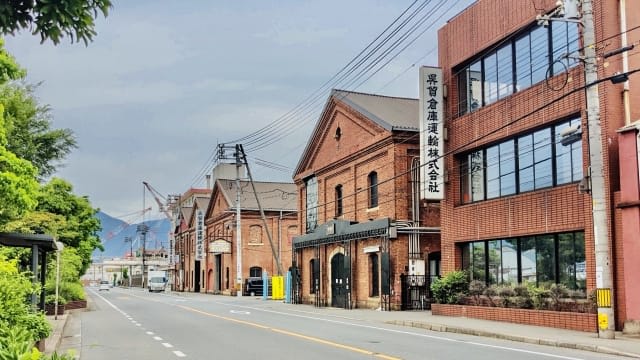
Alley Karasukojima is a globally rare park where you can observe Maritime Self-Defense Force submarines up close. The area around Alley Karasukojima facing Kure Bay is said to be where the battleship Yamato was also secretly constructed in a nearby dock.
At Alley Karasukojima, you can view currently active Maritime Self-Defense Force submarines and escort ships at berth for free. A crane actually used for loading and unloading torpedoes is also on display, and seeing it up close, you'll undoubtedly be overwhelmed by its size and weight.
Another favorite aspect of Alley Karasukojima for me is the retro atmosphere created by the brick warehouses of the former naval arsenal. Why not take a leisurely walk while viewing the dynamic submarines and feeling the history of Kure's military port?
<Information>
-Address: Showacho, Kure City, Hiroshima Prefecture
-Business Hours: 24 hours
-Closed: None
-Phone: 0823-25-3309
-Official Website: https://www.city.kure.lg.jp/soshiki/67/m000008.html
Exquisite Food You Must Enjoy When Visiting Hiroshima
Hiroshima is not only full of attractive tourist destinations but also a treasure trove of exquisite gourmet cuisine. From here, this Hiroshima Guide will introduce must-try local delicacies by area when visiting Hiroshima.
Hiroshima City
Hiroshima-Style Okonomiyaki

Hiroshima-style okonomiyaki is a local specialty dish representative of Hiroshima. Unlike Kansai-style okonomiyaki where the batter and ingredients are mixed together, Hiroshima-style okonomiyaki features a unique style where ingredients such as cabbage, pork, and noodles are placed on top of a thin batter and grilled.
My recommended point is that Hiroshima-style okonomiyaki includes noodles, allowing you to enjoy a hearty, filling okonomiyaki. The noodles infused with the flavors of vegetables like cabbage and pork pair excellently with the rich sauce.
Since famous okonomiyaki restaurants are located throughout Hiroshima Prefecture, it's fun to compare the different flavors from restaurant to restaurant.
Brothless Dandan Noodles
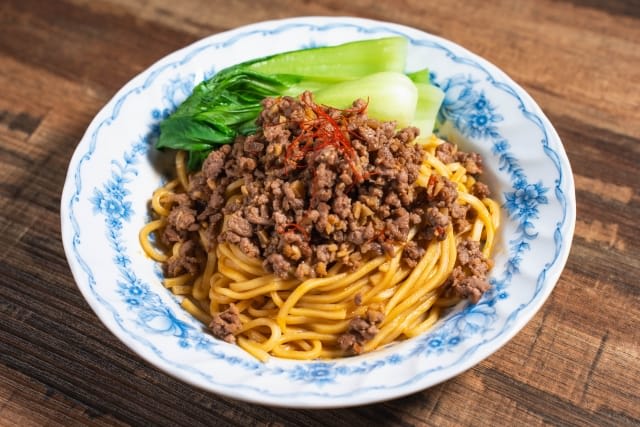
Brothless Dandan Noodles is a Hiroshima local gourmet dish that adds Hiroshima's unique arrangement to Sichuan-style dandan noodles. It's characterized by blending two types of spiciness—chili oil and Chinese Sichuan pepper (huajiao)—with a sauce rich in the flavors of meat miso and sesame, using thin or medium-thin noodles.
Since Hiroshima's Brothless Dandan Noodles don't have soup, the rich sauce clings to the noodles, allowing you to directly taste the moderate spiciness of the spices and the deep richness of the meat miso.
In addition to standard toppings like green onions and soft-boiled eggs, depending on the restaurant, please enjoy unique toppings such as celery or Chinese cabbage.
Sea Urchin and Spinach
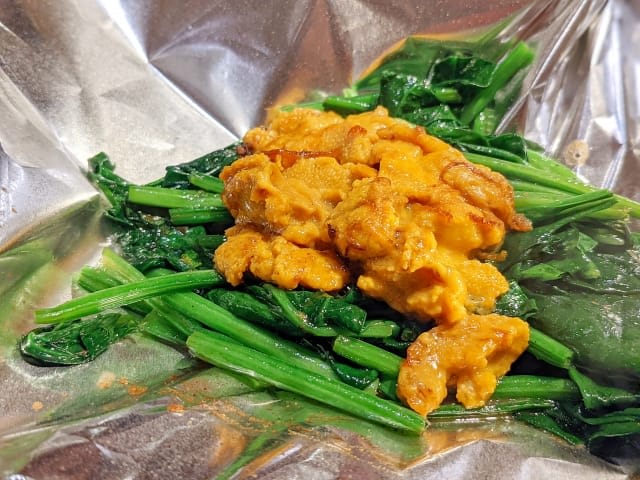
Sea Urchin and Spinach is a hidden specialty gourmet dish of Hiroshima made by stir-frying fresh sea urchin and spinach with butter. The simple seasoning of butter and soy sauce brings out the rich richness of the sea urchin and the savory flavor of the spinach, making it exquisite.
In Hiroshima, you can mainly enjoy Sea Urchin and Spinach at okonomiyaki restaurants and teppanyaki restaurants. Sea Urchin and Spinach pairs excellently with alcohol, and my favorite is enjoying it with cold beer. Please try the piping hot Sea Urchin and Spinach together with delicious local sake.
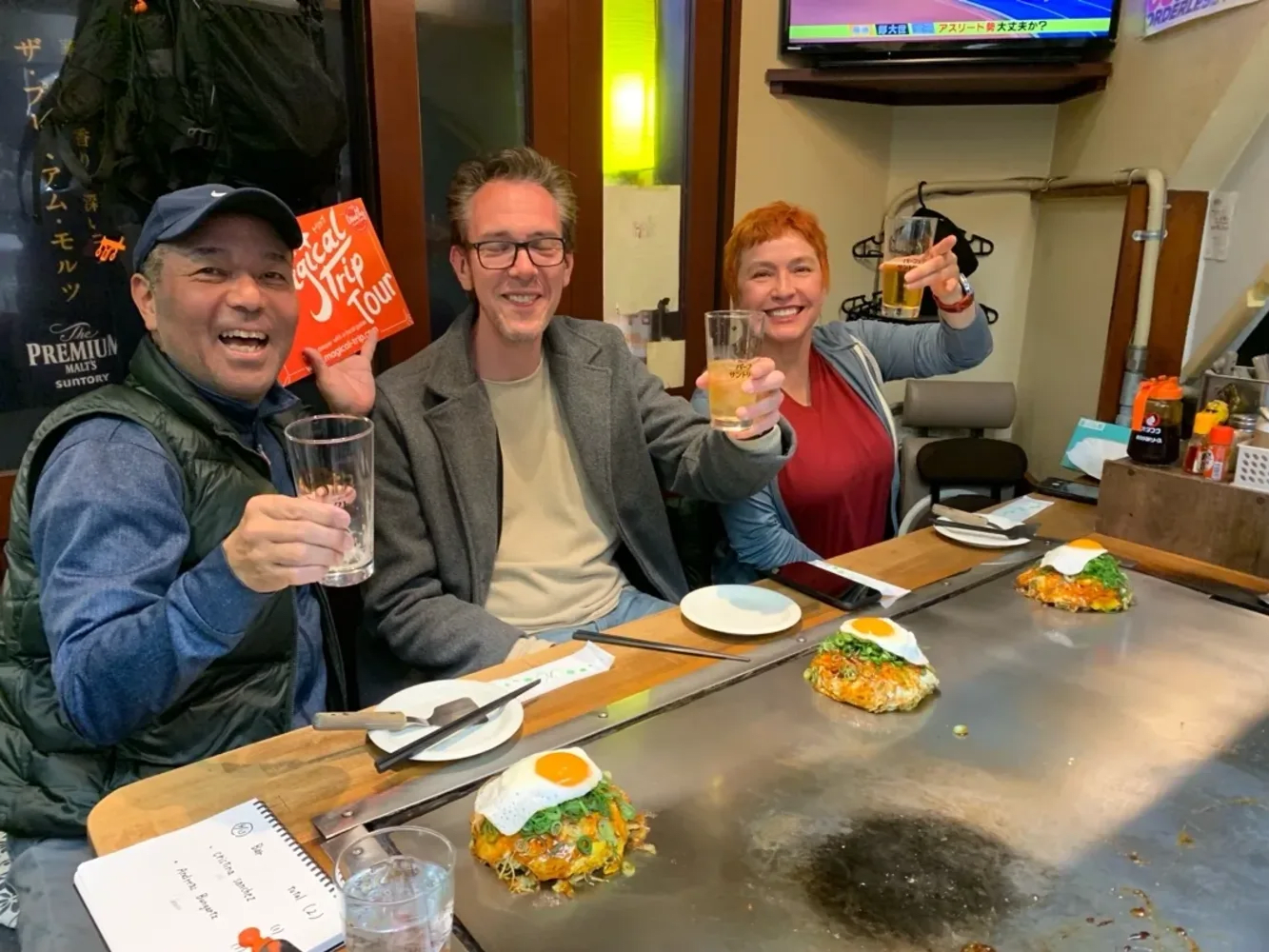
The Hiroshima Bar Hopping Food Tour is a gourmet tour where you can savor Hiroshima specialties like okonomiyaki and oyster dishes, along with exquisite Japanese sake, in Nagarekawa—Hiroshima's largest entertainment district. This Hiroshima Guide experience takes you through three izakayas (Japanese bars) offering a wide variety of local cuisine, allowing you to fully immerse yourself in Hiroshima's food culture.
If you're visiting an izakaya for the first time, you might feel uncertain about unfamiliar menu items and eating customs, including okonomiyaki—one of Hiroshima's signature dishes. On this tour, English-speaking guides carefully explain the dishes and manners, so foreign visitors can enjoy the exquisite cuisine with peace of mind.
This tour is a night tour where you can also savor alcoholic beverages including Hiroshima's famous Japanese sake. Please note in advance that participation is limited to those aged 20 and over.
<Information>
Meeting point: Hacchobori station in front of the Gucci shop
Tour area: Nagarekawa area (Naka-ku, Hiroshima City)
Start time: 18:00 / 19:00
Miyajima Area
White Rice Topped with Sea Eel
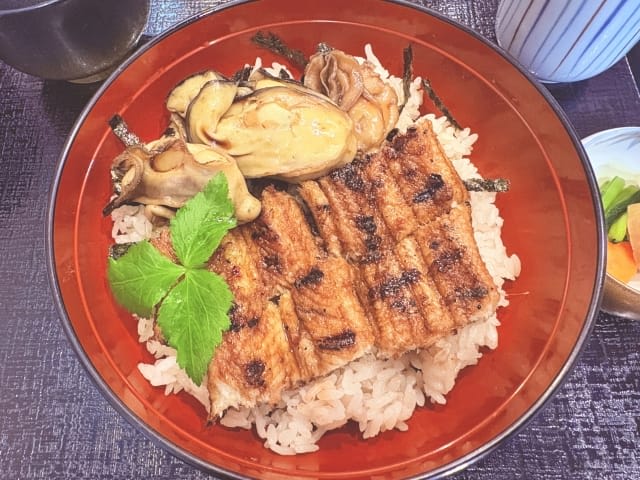
White Rice Topped with Sea Eel is a representative local dish of Miyajima, featuring fresh Sea Eel caught in the Seto Inland Sea served over rice. Sea Eel from the Seto Inland Sea is characterized by its tender flesh and refined umami flavor, and the Sea Eel seasoned with secret sauce creates an exquisite harmony with the sweetness of the rice.
Miyajima has long-established restaurants with over 100 years of history where you can enjoy exceptional White Rice Topped with Sea Eel, full of umami and prepared using traditional cooking methods. Some shops offer takeout options, making this Hiroshima Guide recommendation perfect for those who want to savor Miyajima's specialty while surrounded by the island's beautiful nature.
Momiji Manju
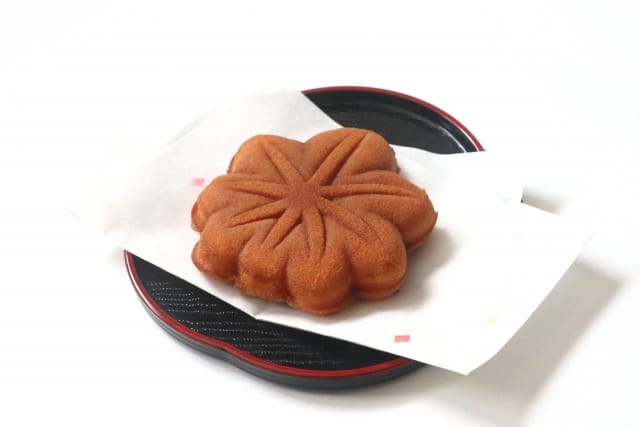
Momiji Manju is a traditional Japanese confection representing Miyajima with over 100 years of history. Momiji Manju is a sweet made of castella-like dough shaped like maple leaves, filled with Anko (a paste made from sweetly boiled azuki beans), and is popular for its gentle sweetness.
What I love about Momiji Manju is that you can enjoy various flavors beyond just Anko, including matcha and chocolate. Since Momiji Manju is individually wrapped, it's perfect for those who want to bring souvenirs back to their home country.
Oysters
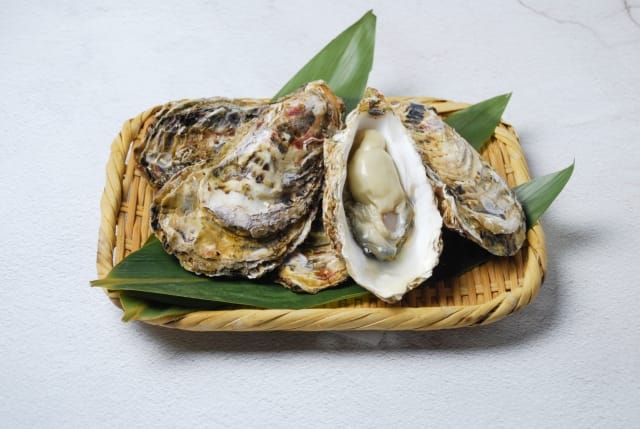
The premium oysters caught near Miyajima are nationally famous as a specialty of Hiroshima Prefecture. Miyajima offers a diverse range of oyster specialty restaurants, including the birthplace of grilled oysters and oyster bars where you can taste creative oyster dishes like gratin.
Oysters raised in the nutrient-rich, calm waters of the Seto Inland Sea are characterized by their creamy, rich flavor and large size. When I visit Miyajima, I can't help but enjoy various oyster dishes—grilled oysters, fried oysters, raw oysters—until I'm completely full.
Since you can safely enjoy delicious oyster dishes year-round in Miyajima, be sure to savor them at least once when you visit, as recommended in this Hiroshima Guide.
Other Areas
Onomichi Ramen
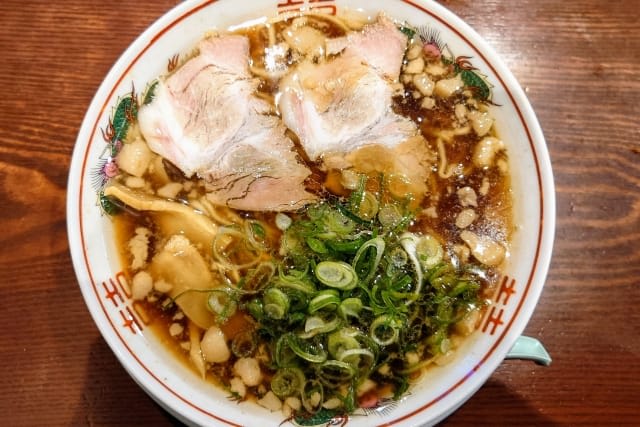
Onomichi Ramen is a local ramen originating from Onomichi City, characterized by soy sauce-based soup and flat noodles. The soup of Onomichi Ramen uses dashi made from small fish caught in the Seto Inland Sea, and it's popular for offering a local flavor unique to Onomichi City, which faces the Seto Inland Sea.
The clear soup of Onomichi Ramen is exceptional, with a light taste enriched by the richness of pork back fat. There are many popular shops in Onomichi City, centered around Onomichi Station, so be sure to enjoy this carefully crafted, exquisite local ramen alongside your Onomichi sightseeing.
Kure Curry
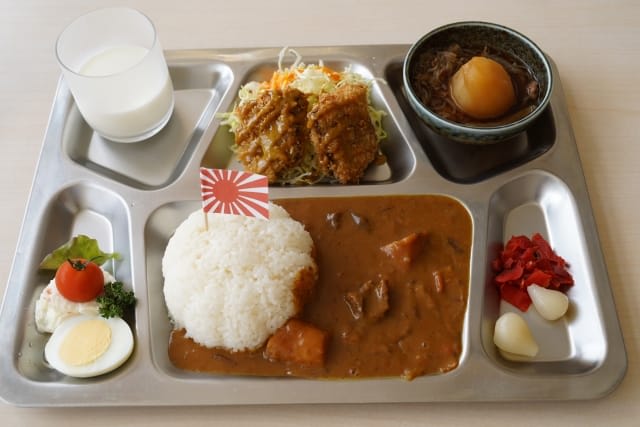
Kure Curry is a local gourmet dish originating from Kure City, which flourished as a naval port city of the former Imperial Japanese Navy. Kure Curry is curry rice that faithfully recreates the flavors actually served aboard Maritime Self-Defense Force vessels. What I recommend is that you can experience the different flavors served on various vessels at each restaurant.
Kure Curry can be enjoyed at curry specialty shops and cafes around Kure Station and Yamato Museum. Some unique establishments, like "KURE HAIKARA SHOKUDOU," allow you to dine in an interior designed to resemble a submarine, so please enjoy the exquisite curry while feeling like a crew member.
Japanese Sake (Saijo)
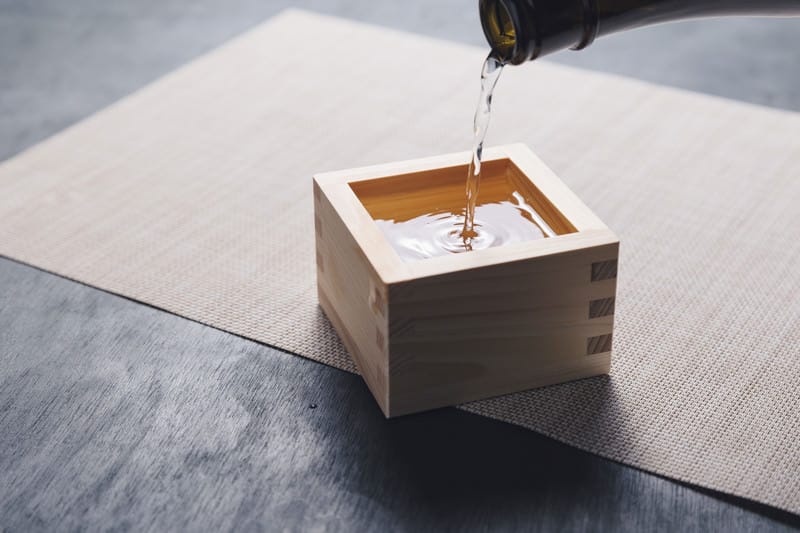
Saijo in Higashihiroshima City is known as one of Japan's leading sake-brewing regions. Along Sakagura-dori Street in front of Saijo Station, seven historic sake breweries with over 100 years of history stand in a row, each offering exquisite Japanese sake brewed using their own traditional methods.
Saijo's Japanese sake uses soft water and is characterized by its smooth mouthfeel and mellow flavor, making it easy to drink even for beginners. Be sure to compare sake from Japan's finest breweries, including "Hakubotan," Saijo's oldest brewery, and "Kamotsuru," said to be the pioneer of Daiginjo sake.
Hiroshima Has Different Charms Each Season! Hiroshima Guide to Seasonal Enjoyment
Spring in Hiroshima (March - May)
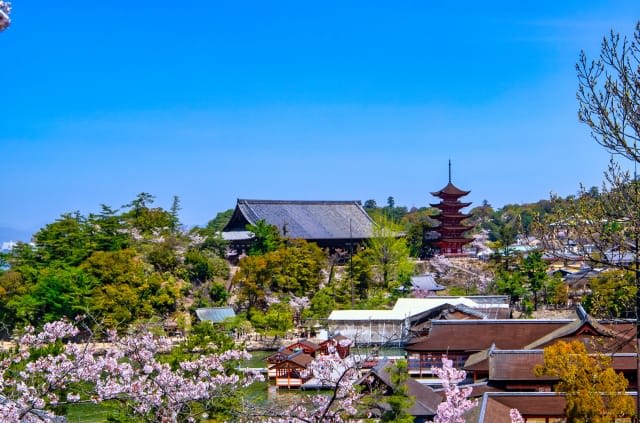
Spring in Hiroshima is a particularly vibrant season of the year when beautiful flowers, including cherry blossoms, harmonize with fresh greenery. In spring Hiroshima, cherry blossoms reach their peak viewing period from late March to early April.
At Peace Memorial Park, the center of Hiroshima tourism, about 300 cherry blossom trees bloom magnificently against the backdrop of the Atomic Bomb Dome, creating a spectacular view where prayers for peace harmonize with natural beauty. On Miyajima, you can enjoy the collaboration between 1,900 cherry blossom trees throughout the island and traditional architecture like Itsukushima Shrine.
Additionally, in spring Hiroshima, oysters harvested from the Seto Inland Sea reach their peak season. Even on Miyajima, where you can enjoy delicious oysters year-round, spring is particularly said to be when oysters reach their highest nutritional value and umami. This Hiroshima Guide recommends this season for those who want to taste high-quality oysters that are creamy and rich.
Events to Enjoy in Spring Hiroshima
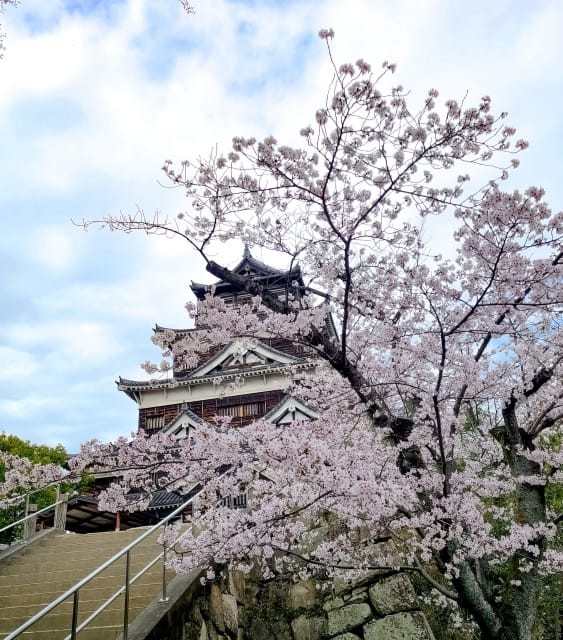
In spring Hiroshima, the "Hiroshima Sakura Matsuri" is held at Hiroshima Castle, the symbol of Hiroshima. I especially recommend participating at night when the traditional castle architecture and cherry blossoms are illuminated.
Also, the "Hiroshima Flower Festival," Hiroshima's largest event held during the Golden Week holidays in May, is a must-see. The flower parade set on Peace Boulevard, Hiroshima's main street, features dancing and musical performances by locals, attracting over 1.5 million visitors every year.
When you visit Hiroshima in spring, why not participate in these vibrant events themed around the flowers that reach their peak viewing during this season?
【Representative Events】
Hiroshima Sakura Matsuri
Dates: Late March to early April / Location: Hiroshima Castle
Hiroshima Flower Festival
Dates: Early May / Location: Peace Boulevard, Peace Memorial Park, etc.
Autumn in Hiroshima (September - November)
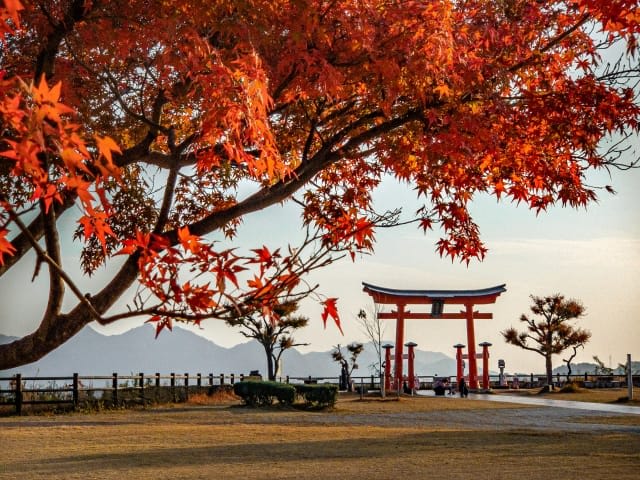
Autumn in Hiroshima is the perfect season to enjoy stunning landscapes where beautiful autumn foliage interweaves with historic architecture. Hiroshima's autumn leaves reach their peak viewing time from mid to late November.
At Momijidani Park (Maple Valley Park) on Miyajima, approximately 700 maple trees turn vibrant colors all at once from mid to late November, and visitors can enjoy quintessentially Japanese scenery where the vermillion "Momiji Bridge" in the park blends harmoniously with the foliage. During this period on Miyajima, don't miss the spectacular views created by the fusion of traditional architecture such as Itsukushima Shrine and the Five-Story Pagoda with the autumn leaves.
Additionally, in autumn on Miyajima, oyster harvesting begins around October, and fresh raw oysters reach their prime eating season. Along with oysters, be sure to fully savor Hiroshima's autumn delicacies including seafood such as Spanish mackerel and filefish, as well as fruits like persimmons and chestnuts.
Events to Enjoy in Autumn Hiroshima
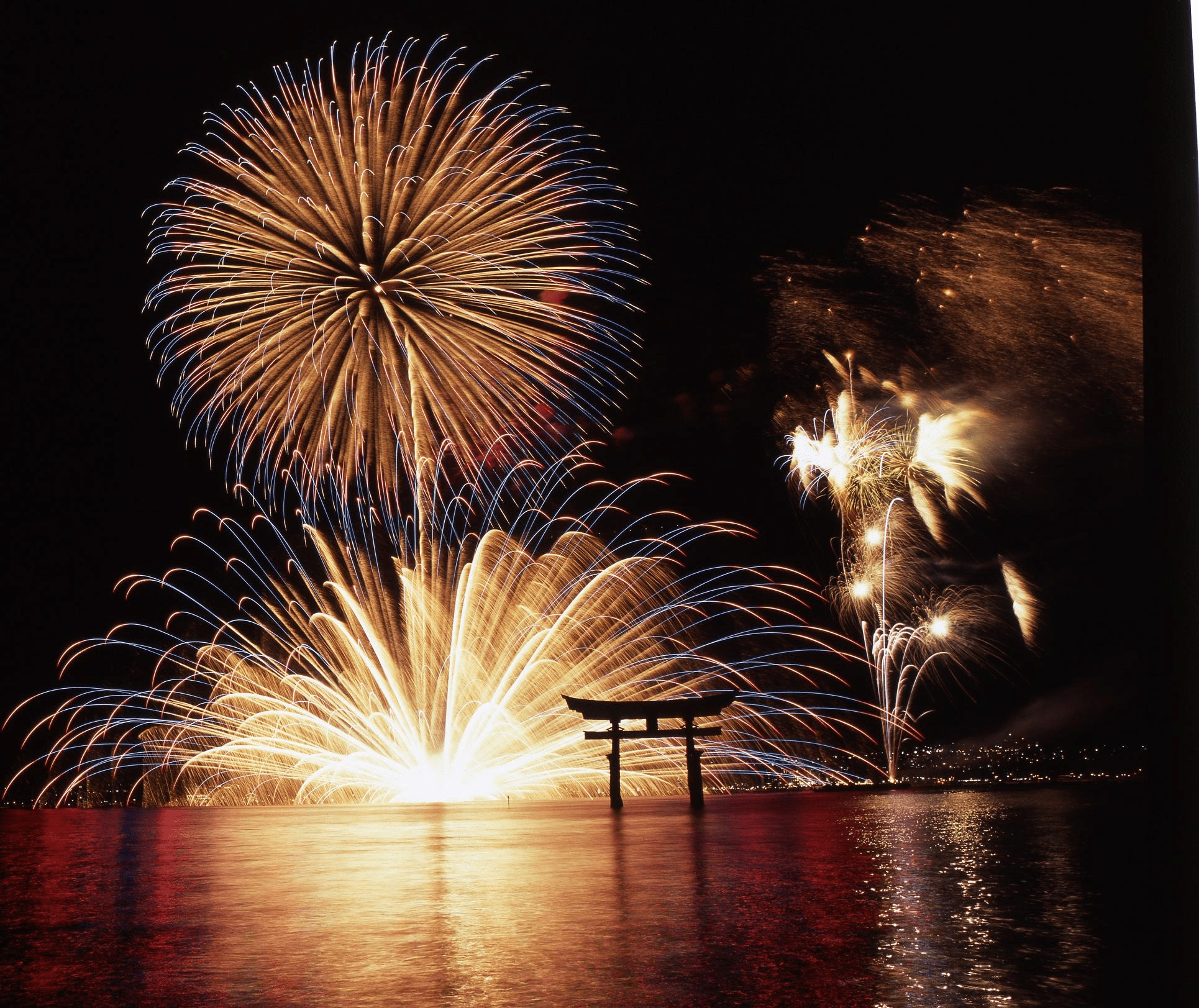
In autumn, the "Momijidani Park Illumination" is held on Miyajima, where you can experience a fantastical atmosphere as vivid autumn foliage is illuminated and emerges from the darkness.
Also in autumn on Miyajima, I highly recommend the "Itsukushima Underwater Fireworks Festival" where fireworks are launched over the sea. Fireworks spread across the backdrop of Itsukushima Shrine, creating a mystical spectacular view formed by the light of fireworks and traditional architecture.
Furthermore, in Onomichi, the Lantern Festival is held where shrines and temples are illuminated by the gentle glow of lanterns. When visiting Hiroshima in autumn, be sure to experience these special events unique to this season where autumn foliage and traditional culture merge.
[Representative Events]
Itsukushima Underwater Fireworks Festival
Date: October 18 / Location: Off the coast of Miyajima
Onomichi Lantern Festival
Date: October 18 / Location: Shrine approach paths and coastal areas in Onomichi City
Momijidani Park Illumination
Date: November 8-30 / Location: Momijidani Park
Summer in Hiroshima (June - August)
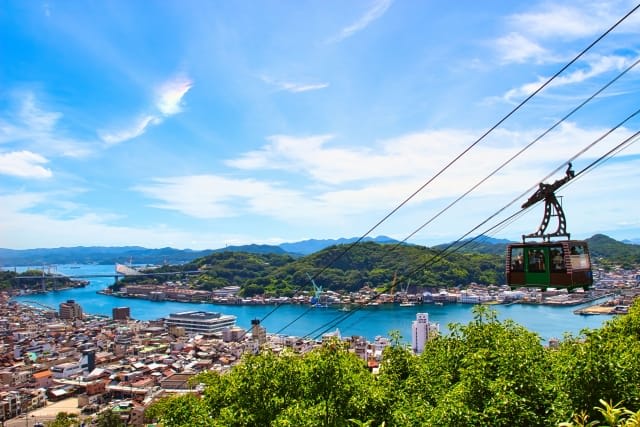
Summer in Hiroshima is a season to enjoy beautiful landscapes woven from deep greenery and blue seas. Particularly in the port town of Onomichi, my favorite way to spend time is cycling along the Shimanami Kaido while feeling the pleasant breeze and viewing spectacular scenery of the sea sparkling in the sunlight.
Additionally, summer in Hiroshima is a season with many special events significant to Hiroshima, including ceremonies held on August 6th when the atomic bomb was dropped, and traditional ceremonies at shrines and temples. You can experience events where nature and tradition merge, such as the shrine's largest festival held at the torii gate of Itsukushima Shrine floating in the sea.
In summer Hiroshima, Sea Eel reaches its peak season. Summer Sea Eel is characterized by its light, refreshing flavor, allowing you to fully enjoy the delicate taste that is the essence of Sea Eel's appeal. When visiting Miyajima in summer, be sure to try White Rice Topped with Sea Eel made with seasonal Sea Eel.
Events to Enjoy in Summer Hiroshima
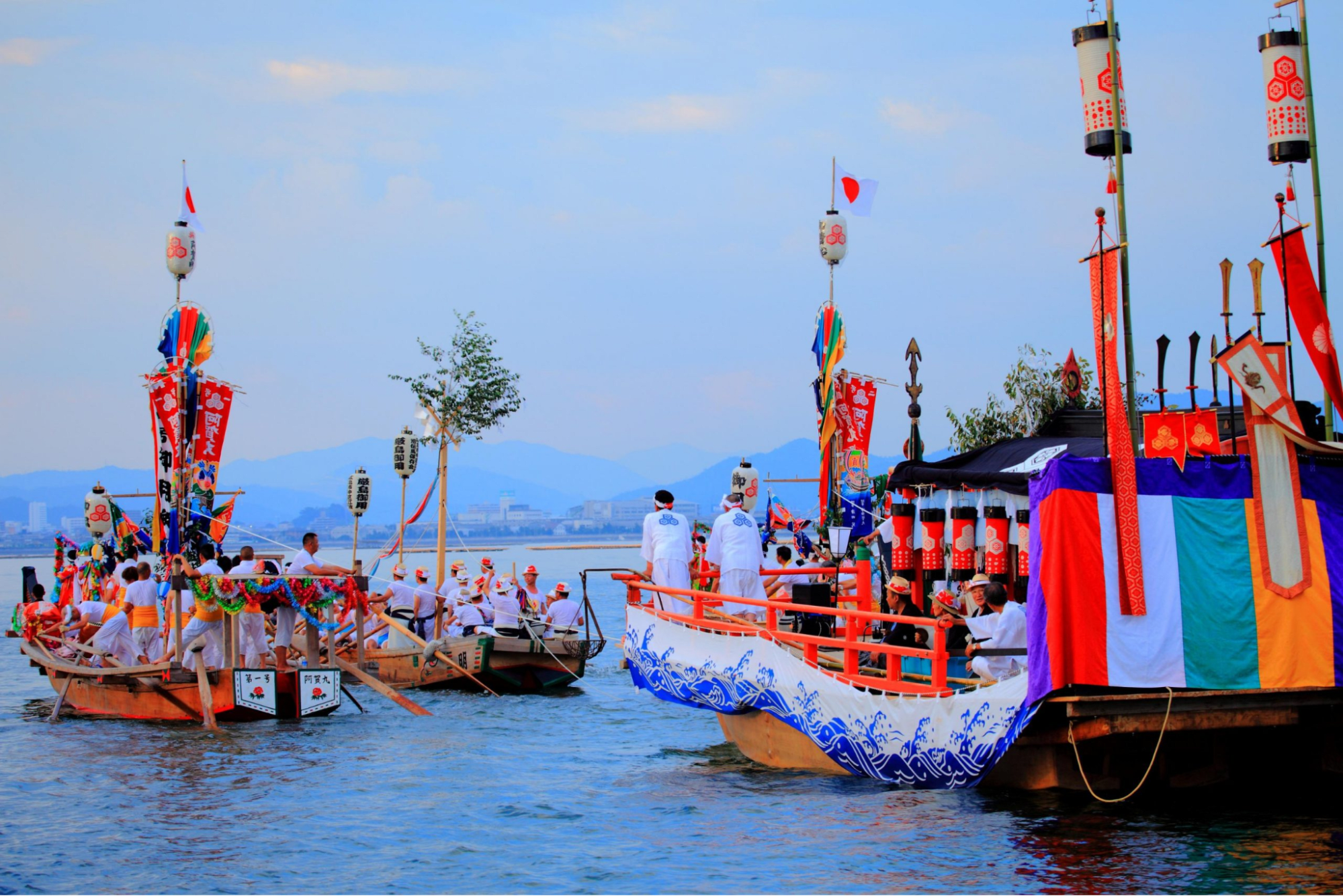
The "Peace Memorial Ceremony" held on August 6th, when the atomic bomb was dropped, is an important event representing Hiroshima's summer. At 8:15 AM, the time when the atomic bomb was dropped, a moment of silence is observed and doves, symbols of peace, are released, allowing visitors to spend a moment offering prayers for peace in a solemn atmosphere.
Also on Miyajima, the "Kangen Festival," Itsukushima Shrine's largest Shinto ritual, is a must-see. Gorgeously decorated boats travel between Miyajima and shrines on the mainland while playing traditional instruments. Be sure to witness this powerful traditional event unique to Itsukushima Shrine floating on the sea.
[Representative Events]
Peace Memorial Ceremony
Date: August 6 / Location: Peace Memorial Park
Kangen Festival
Date: Designated day in July or August each year / Location: Itsukushima Shrine
Winter in Hiroshima (December - February)
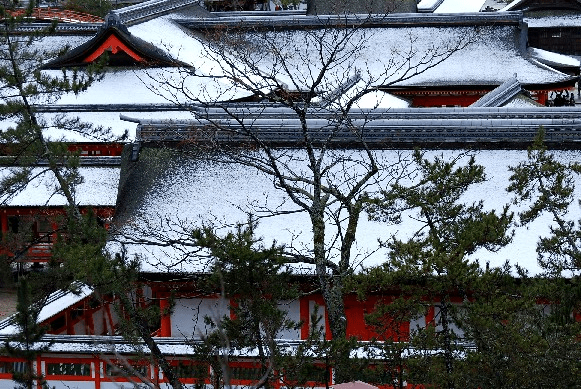
Winter in Hiroshima is a season when tourists are relatively few, allowing you to leisurely savor Hiroshima's nature and history in a calm atmosphere. There are also days with light snowfall, and you can enjoy winter-exclusive spectacular views of historic landmarks such as Atomic Bomb Dome and Itsukushima Shrine draped in snow.
Additionally, in January, you can experience traditional New Year events celebrating the new year at shrines and temples throughout Hiroshima, such as Hatsumode (the first shrine visit of the year).
Hiroshima's winter, alongside spring, is a delicious season for oysters. Winter oysters are plump and full-bodied, allowing you to enjoy their substantial, satisfying taste. Furthermore, sea eel becomes fatty, offering a juicy sweetness different from summer. Cold winter is also perfect for enjoying local gourmet noodle dishes that warm the body.
Events to Enjoy in Winter Hiroshima
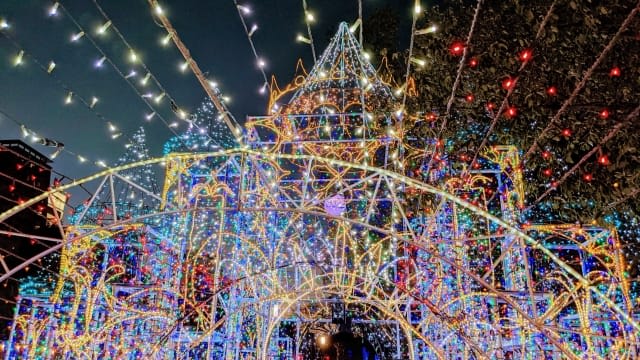
In central Hiroshima centered around Peace Boulevard, "HIROSHIMA DREAMINATION" is held, where the entire city is decorated with colorful illuminations. In the crisp winter air, you can enjoy charming illuminations reminiscent of a fairy tale world, featuring castles and carriages.
Also on Miyajima, traditional New Year events celebrating Itsukushima Shrine are held in early January, where you can experience a festive mood and sacred atmosphere different from usual. Furthermore, at the "Miyajima Oyster Festival," you can fully enjoy seasonal oysters through a rich variety of oyster dishes including oyster hot pot and oyster curry.
[Representative Events]
HIROSHIMA DREAMINATION
Date: November 7, 2025 - January 3, 2026 / Location: Central Hiroshima City including Peace Boulevard
Miyajima Oyster Festival
Date: Second weekend of February / Location: In front of Miyajima Pier
"Frequently Asked Questions" from Foreign Visitors to Hiroshima
How Many Days Are Needed to Enjoy Hiroshima Sightseeing?
If you efficiently visit only the peace-related spots in central Hiroshima, such as Peace Memorial Park and Atomic Bomb Dome, one day is sufficient to enjoy.
If you plan to visit central Hiroshima plus Miyajima, I recommend staying for 2 days. By allocating approximately half a day for peace-related tourist sites, about half a day for Hiroshima Castle and Hiroshima Orizuru Tower, and approximately one full day for travel between Hiroshima and Miyajima plus Miyajima sightseeing, you can leisurely explore each spot.
Additionally, if you extend your trip to areas farther from Hiroshima such as Kure or Onomichi, each requires approximately one day. Please use this as a reference when planning your Hiroshima trip.
What Are the Main Transportation Methods in Hiroshima City?
For traveling within Hiroshima City, streetcars (Hiroshima Electric Railway) are convenient. They connect major tourist sites with a flat fare of 240 yen in the Hiroshima area (120 yen for children), and run directly from Hiroshima Station to Atomic Bomb Dome and the ferry terminal for Miyajima.
Additionally, the tourist loop bus "Hiroshima Meipuru~pu" allows you to travel to major spots such as Peace Memorial Park and Hiroshima Castle for the same fare as the streetcar (240 yen for adults, 120 yen for children). If you're touring various tourist sites in Hiroshima City, you can save money by using the one-day pass (600 yen for adults, 300 yen for children).
What Are Recommended Cities to Visit After Hiroshima?
After visiting Hiroshima, I recommend touring the Kansai area, including Osaka and Kyoto.
In Osaka, Japan's second-largest city, you can enjoy diverse attractions including the magnificent Osaka Castle, theme parks such as Universal Studios Japan and aquariums. Also in Osaka, you can taste Kansai-style okonomiyaki. It's interesting to compare it with Hiroshima-style okonomiyaki!
Kyoto, Japan's ancient capital, is needless to say, one of Japan's most popular tourist destinations. With particularly historic shrines and temples, why not experience Japanese history and culture different from Hiroshima, the symbol of peace?

